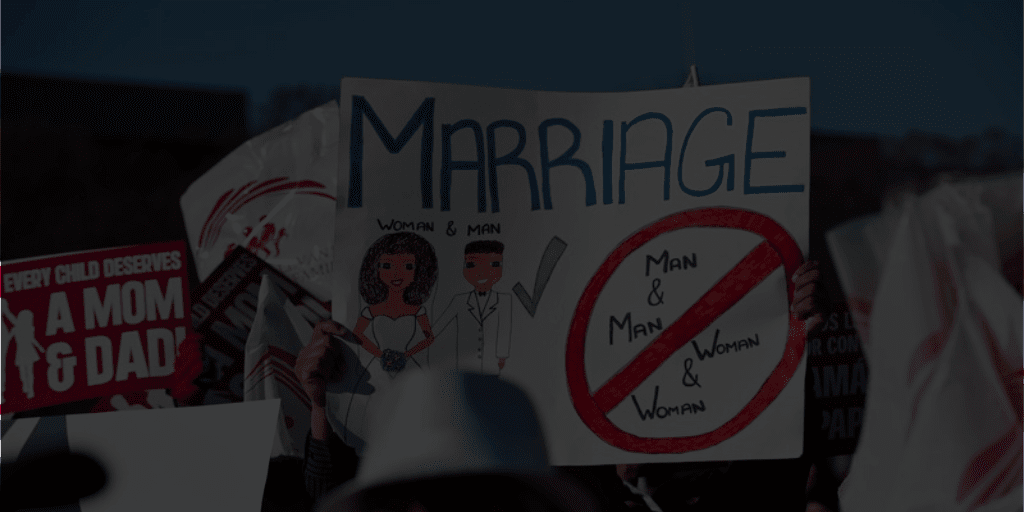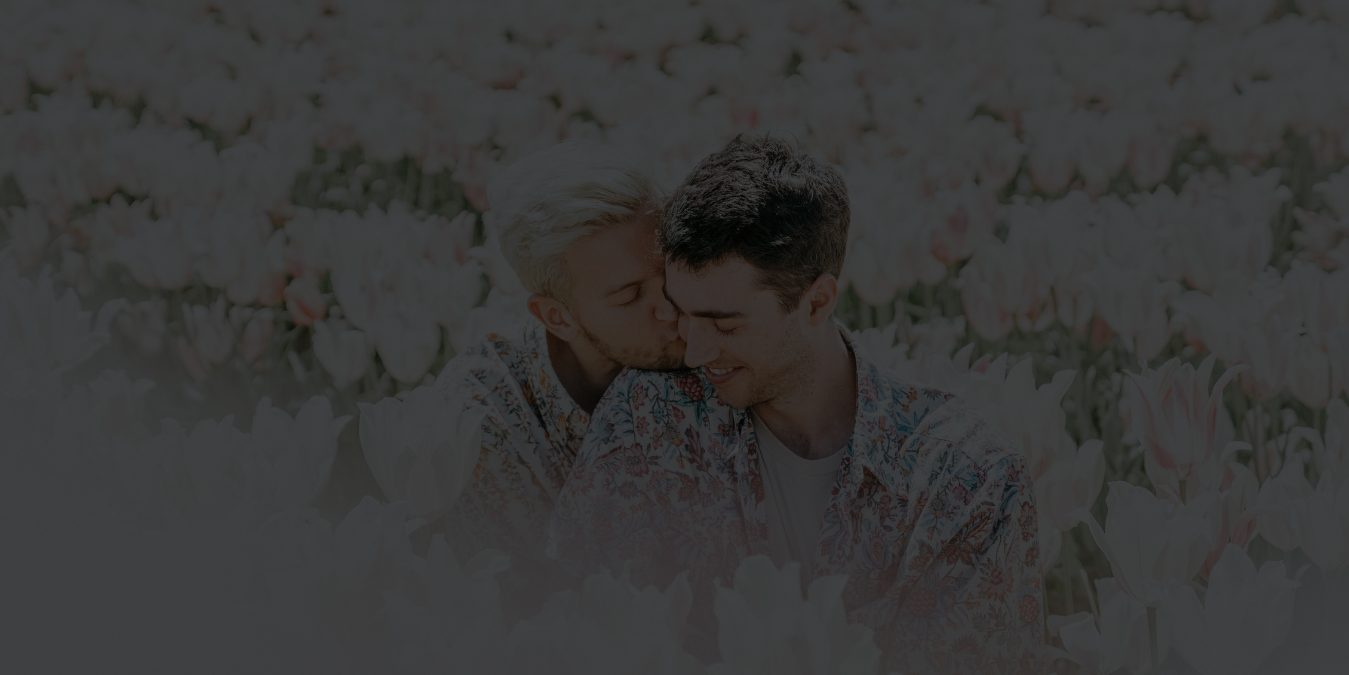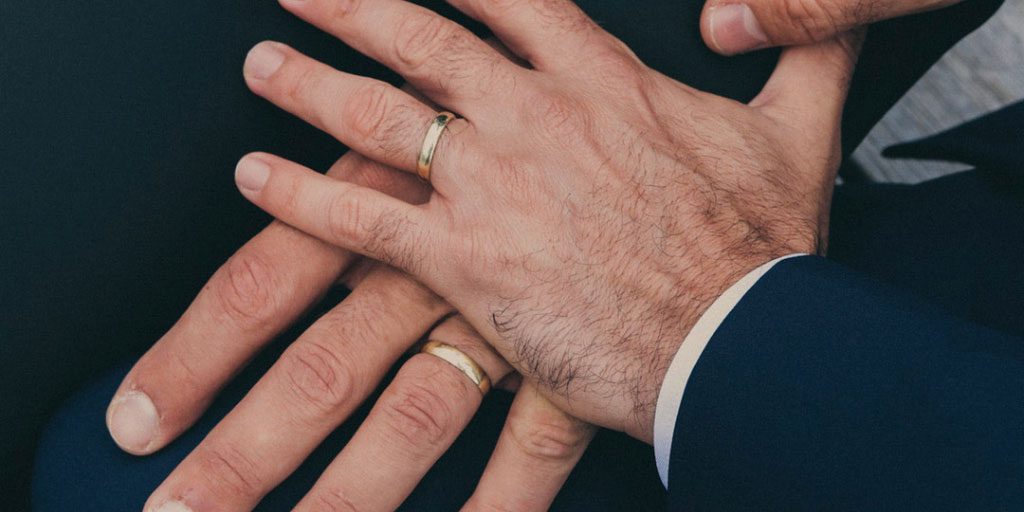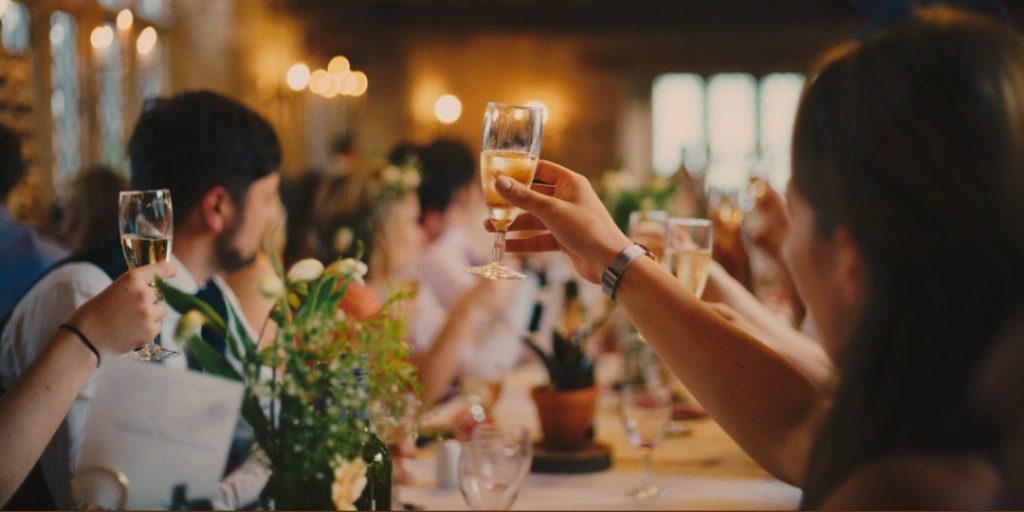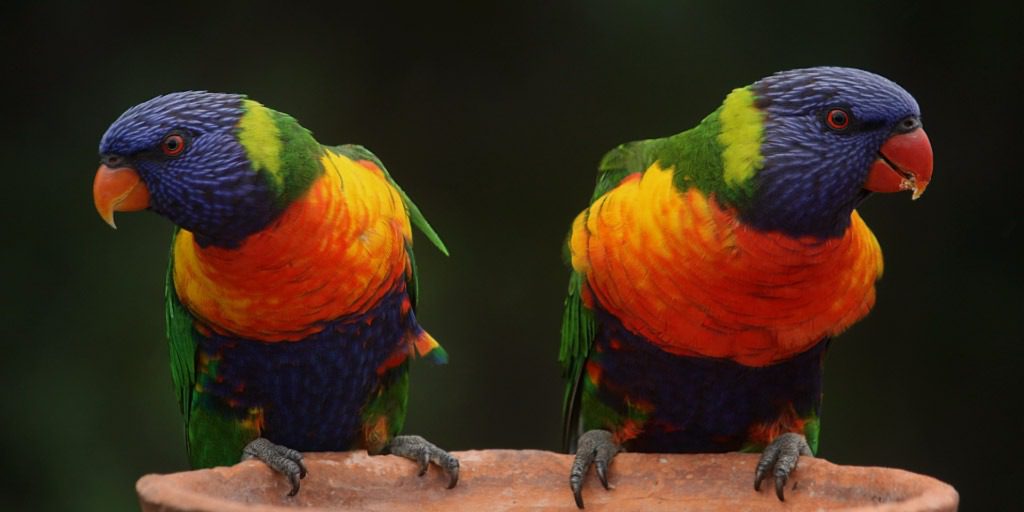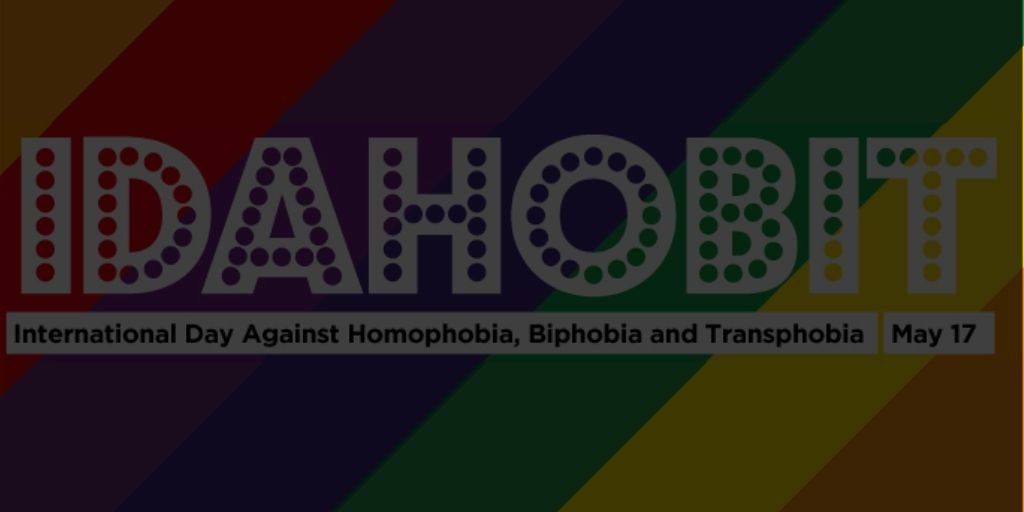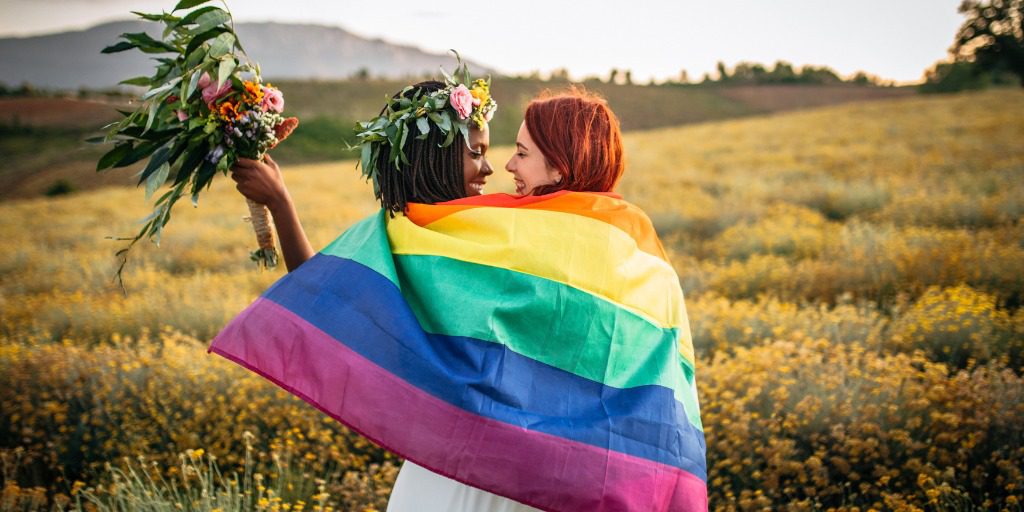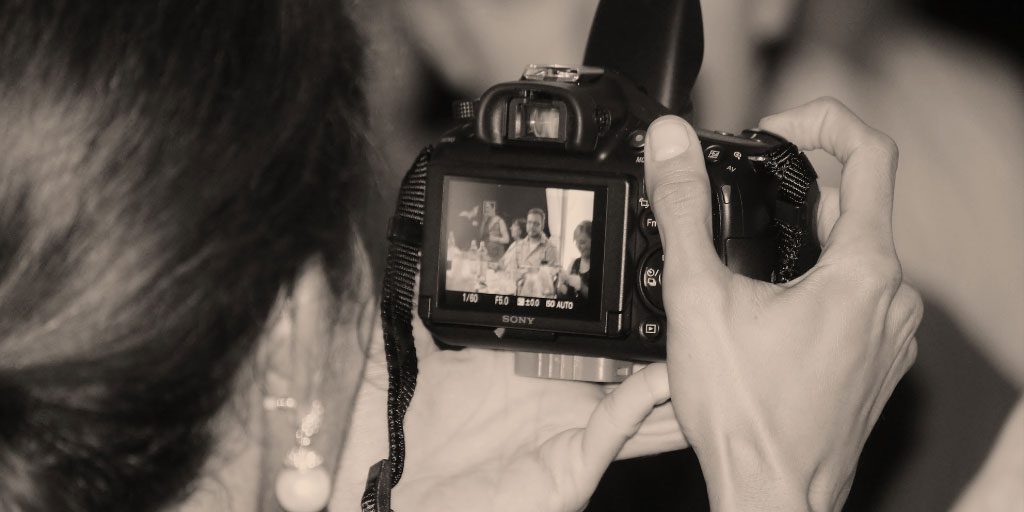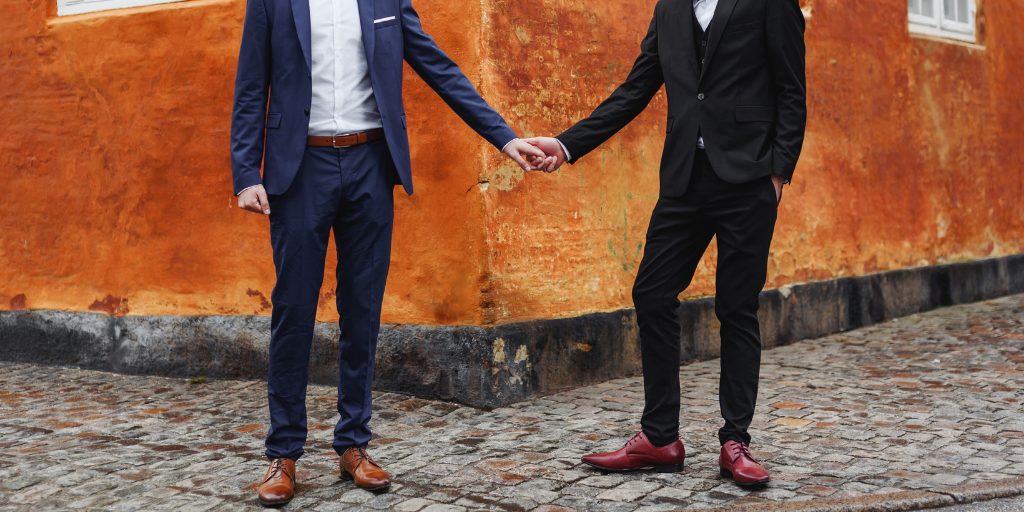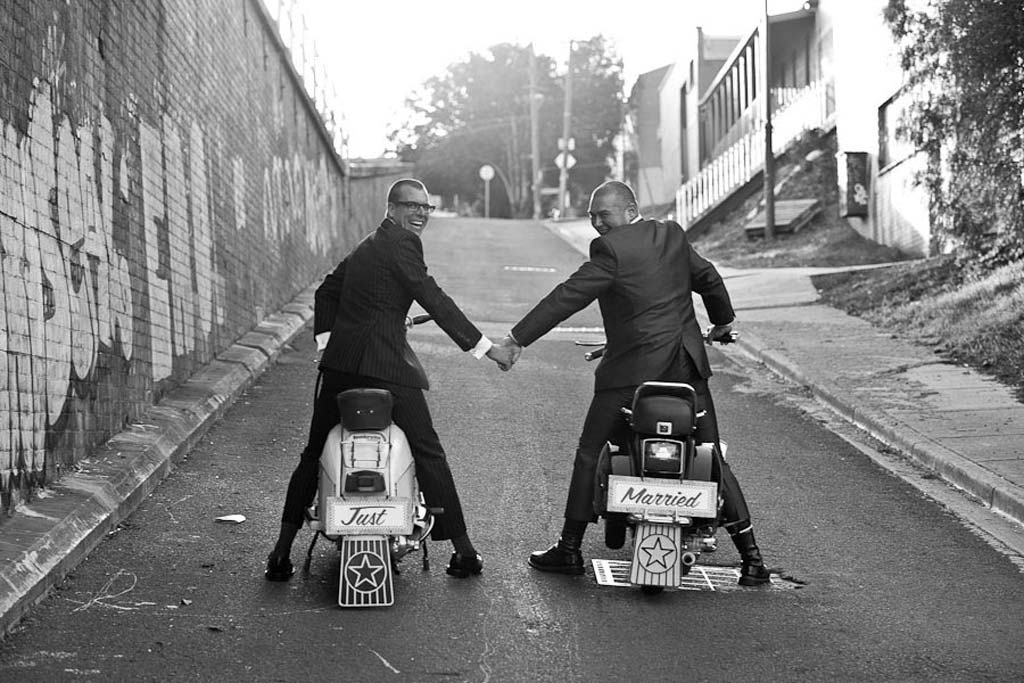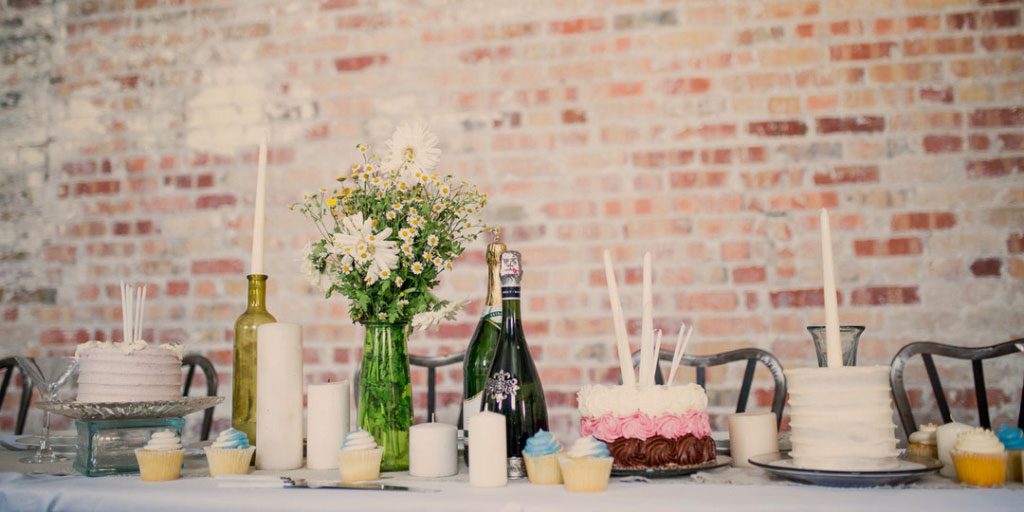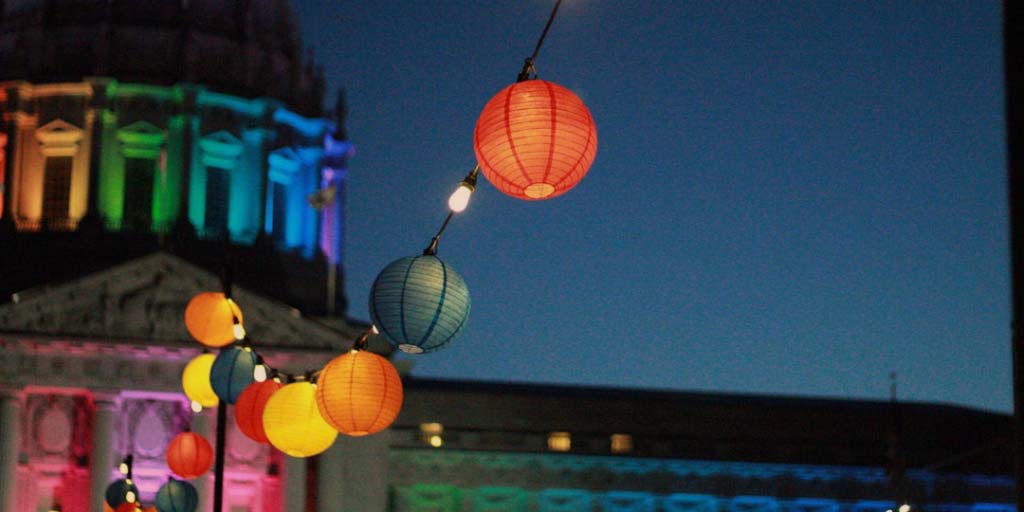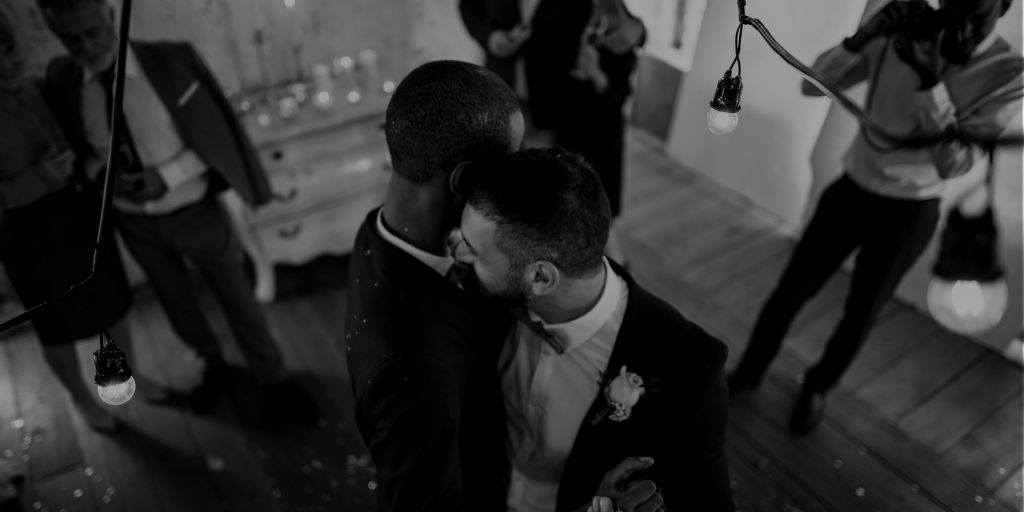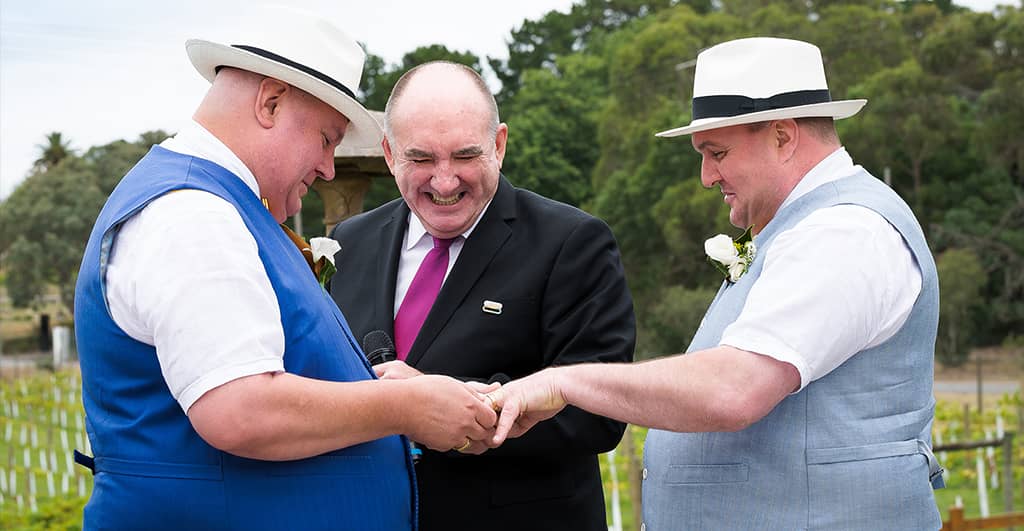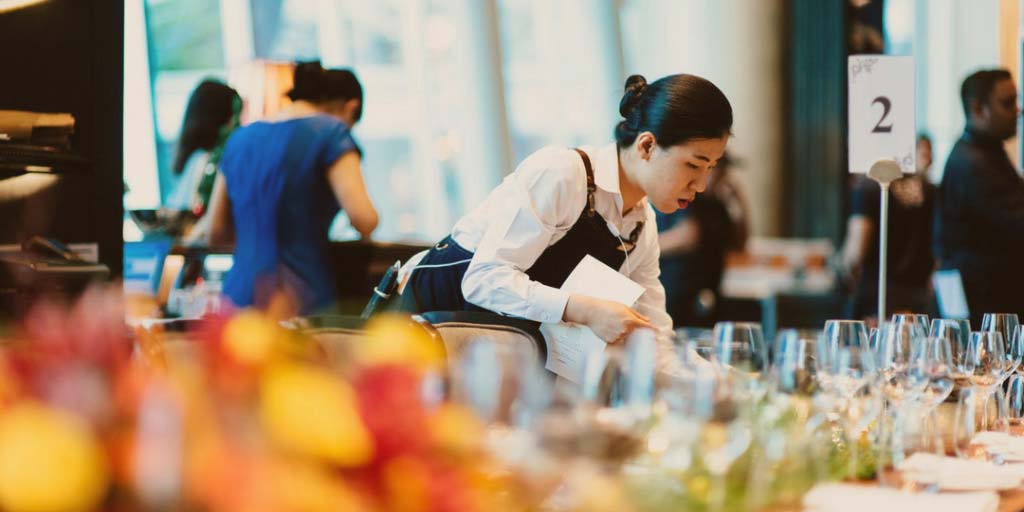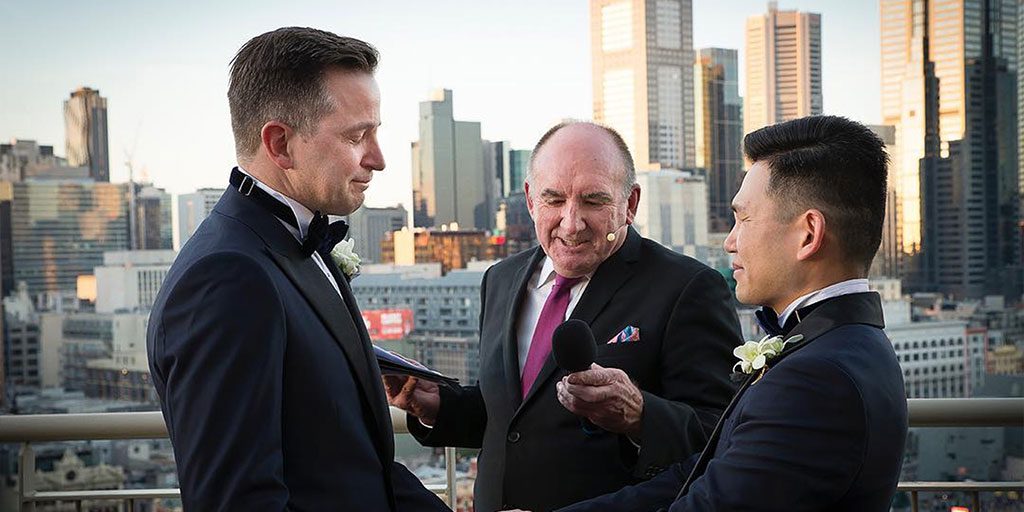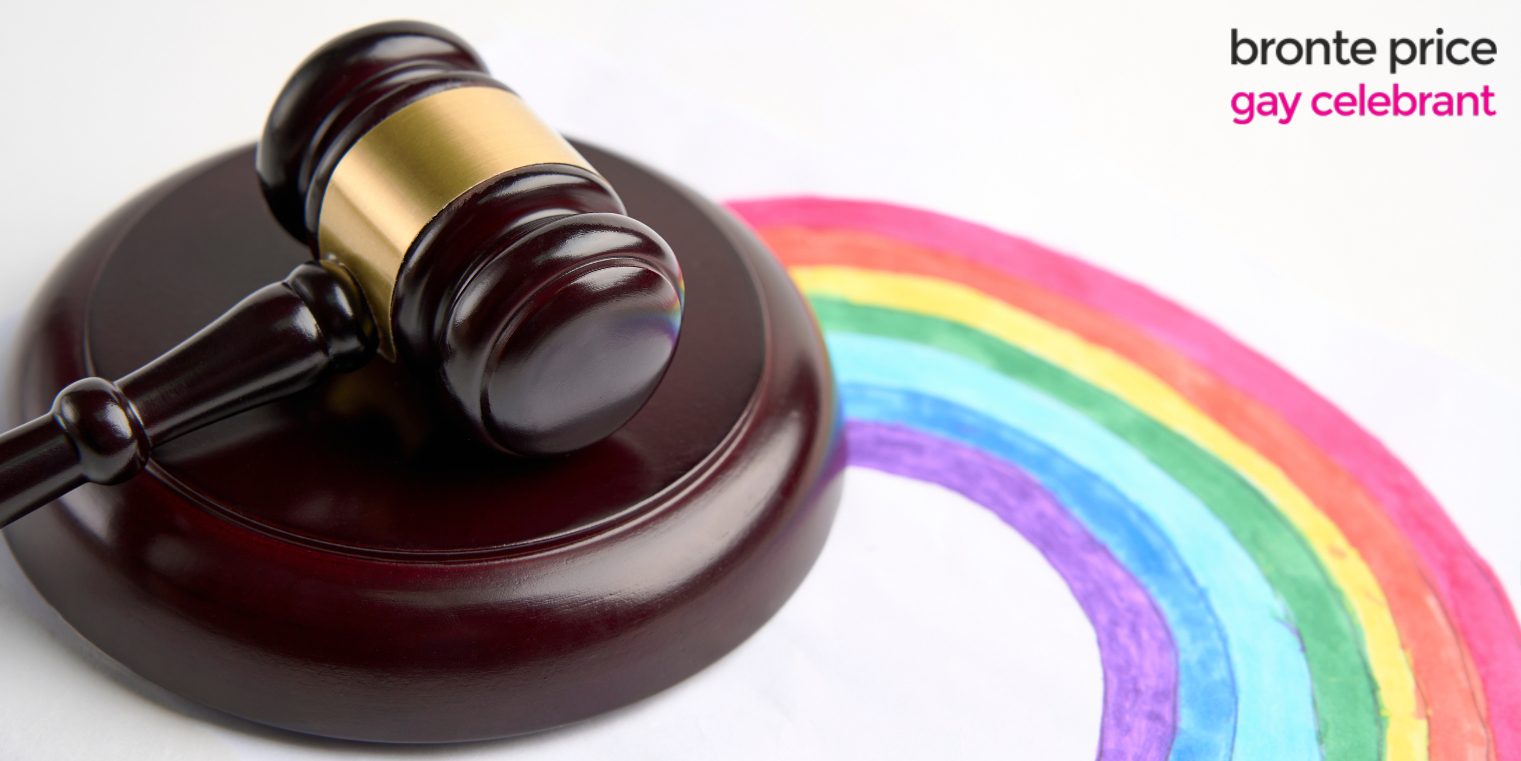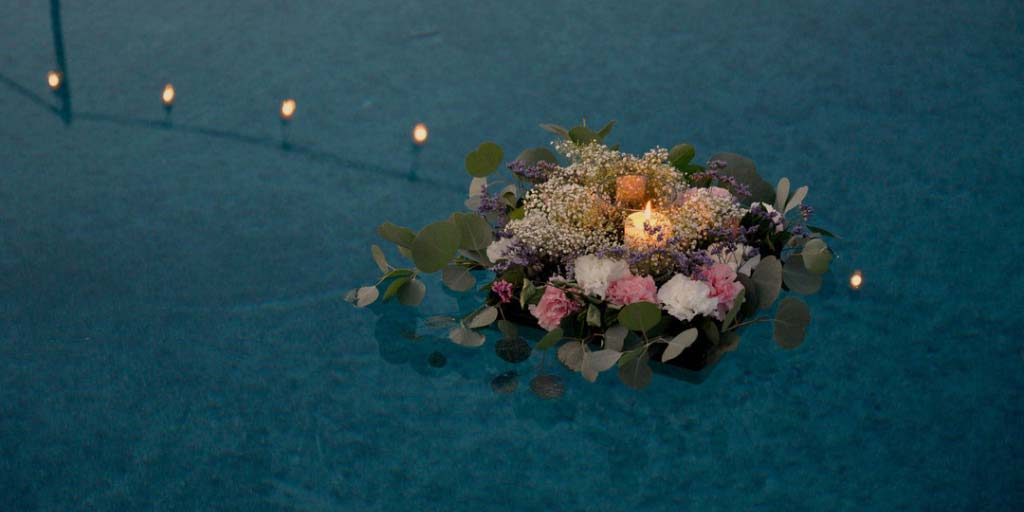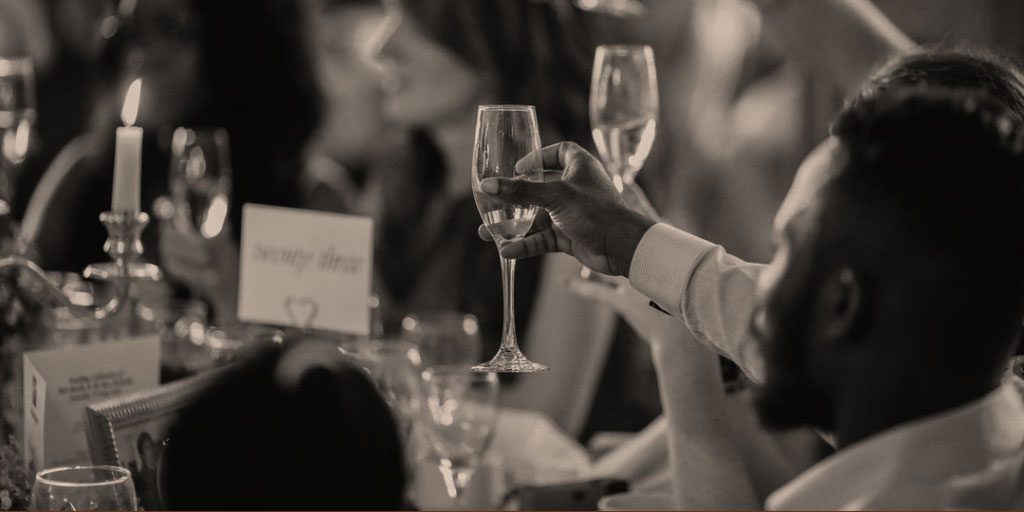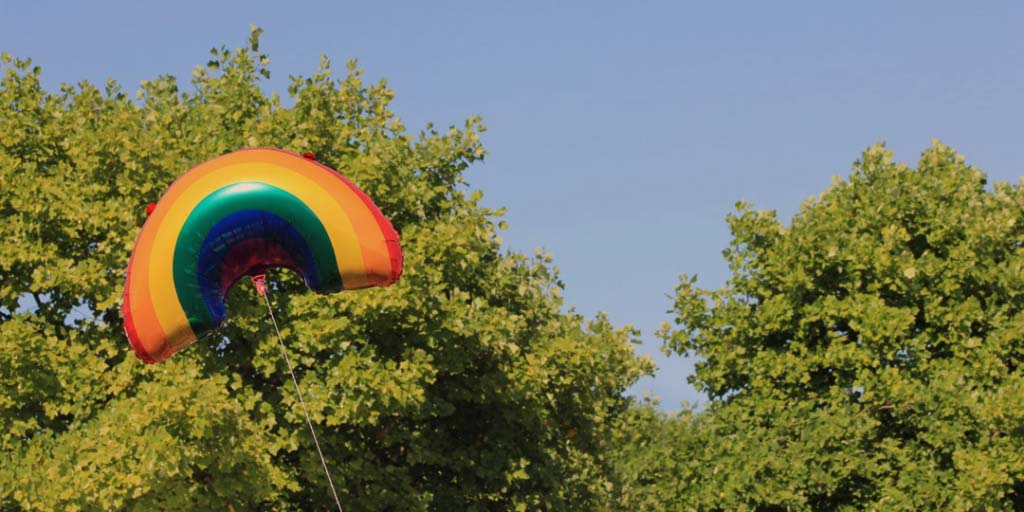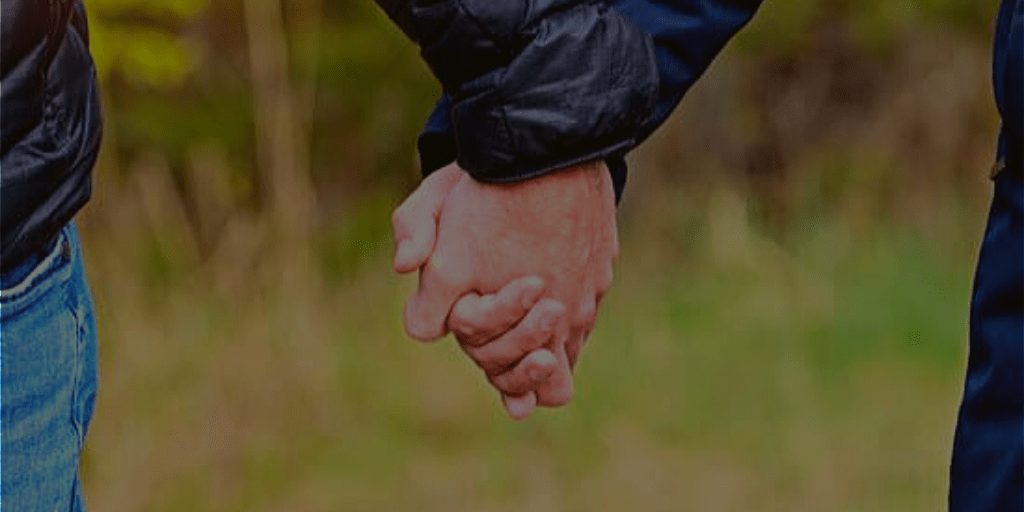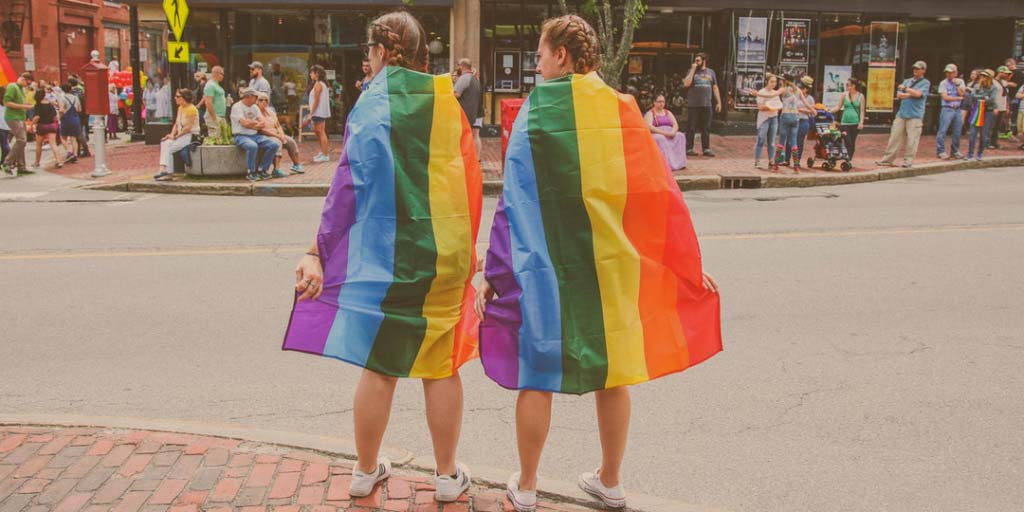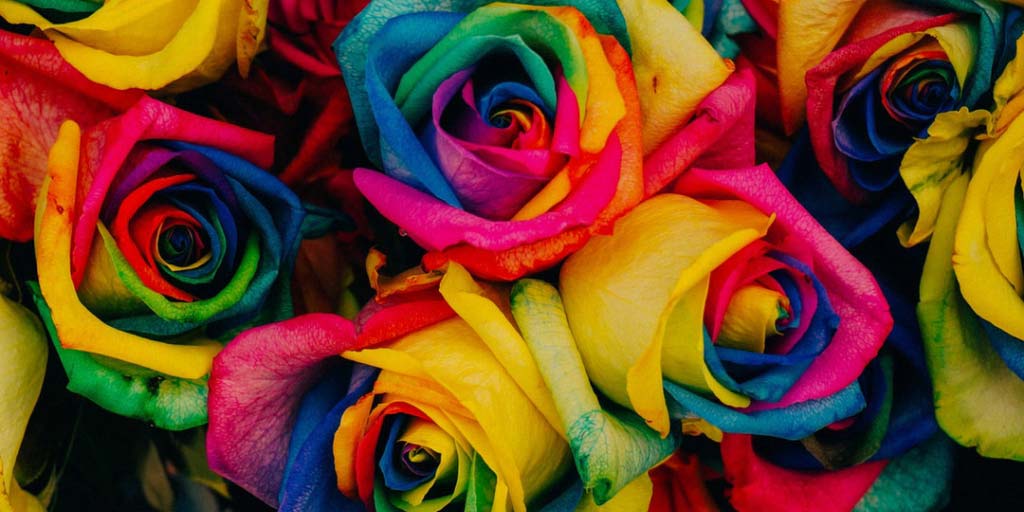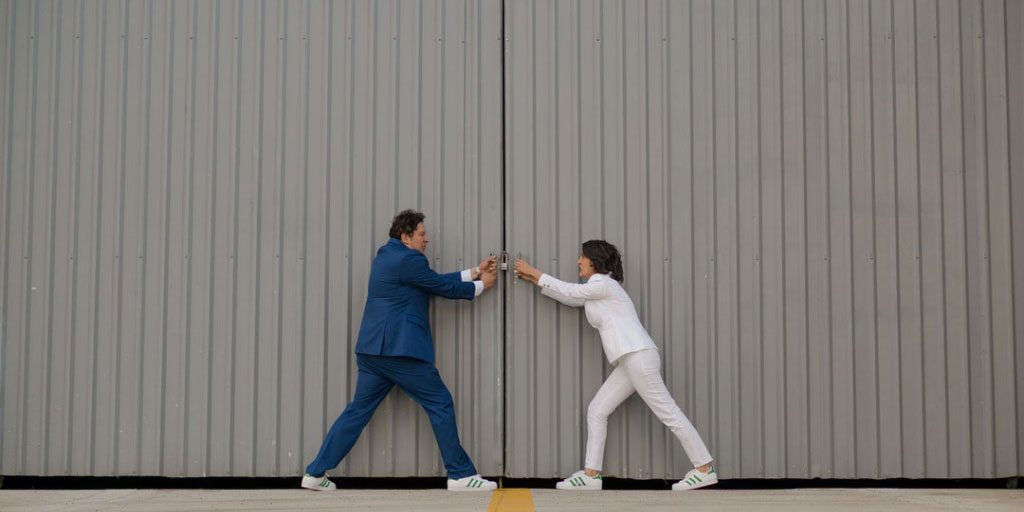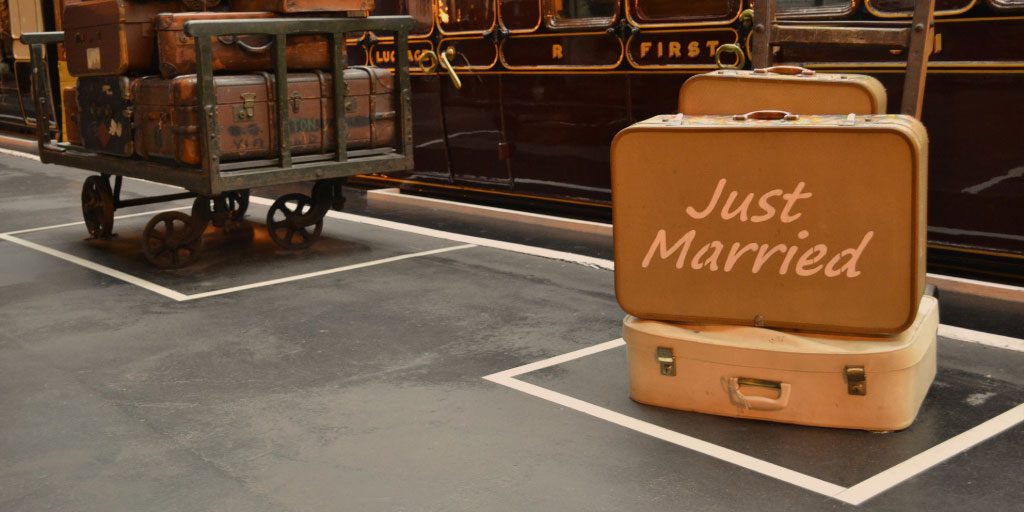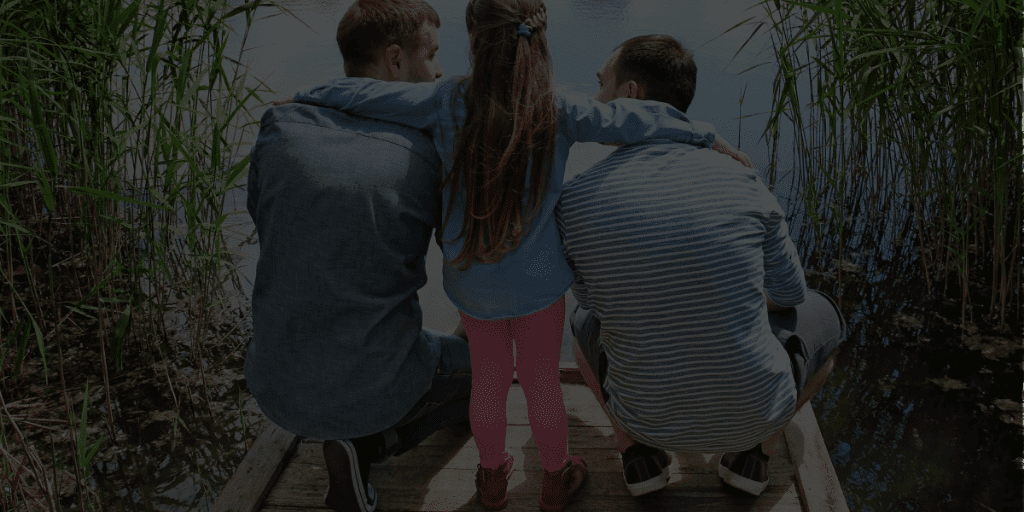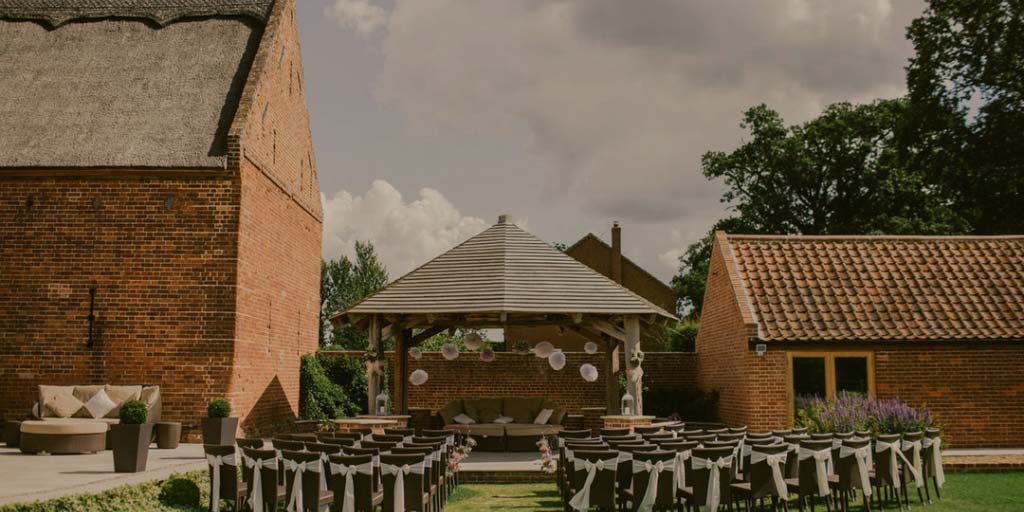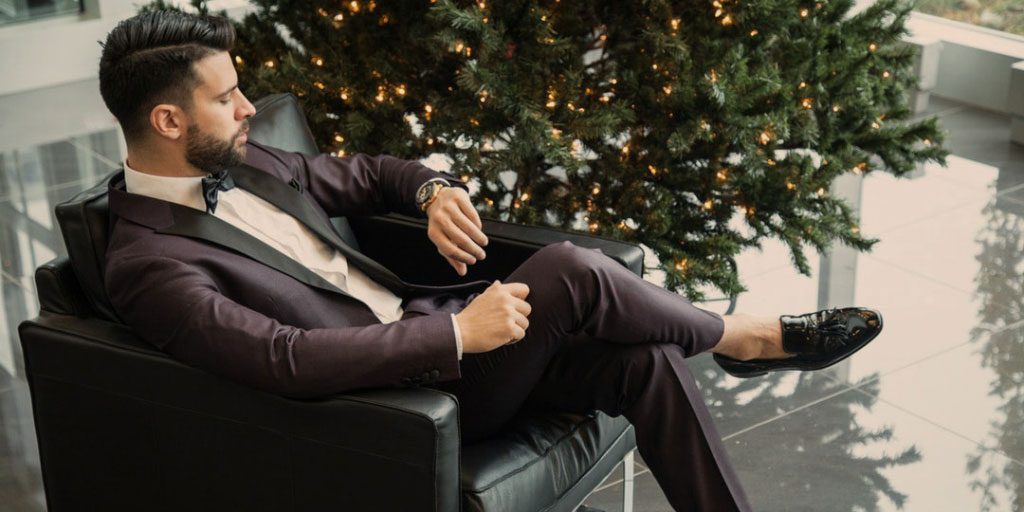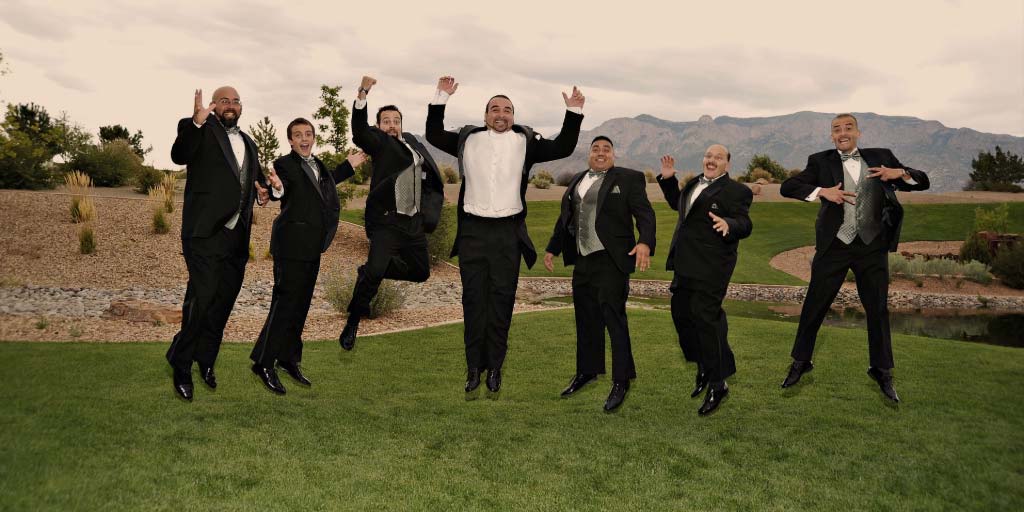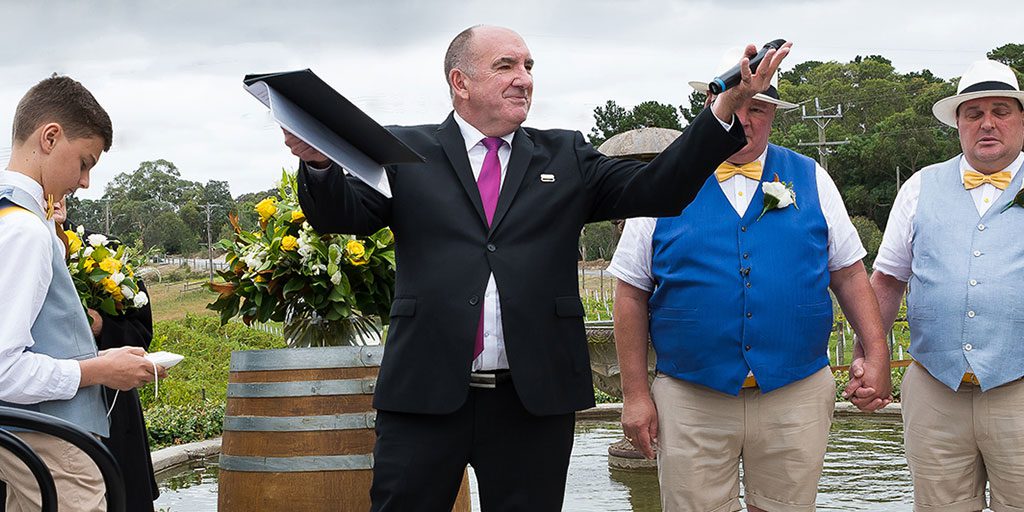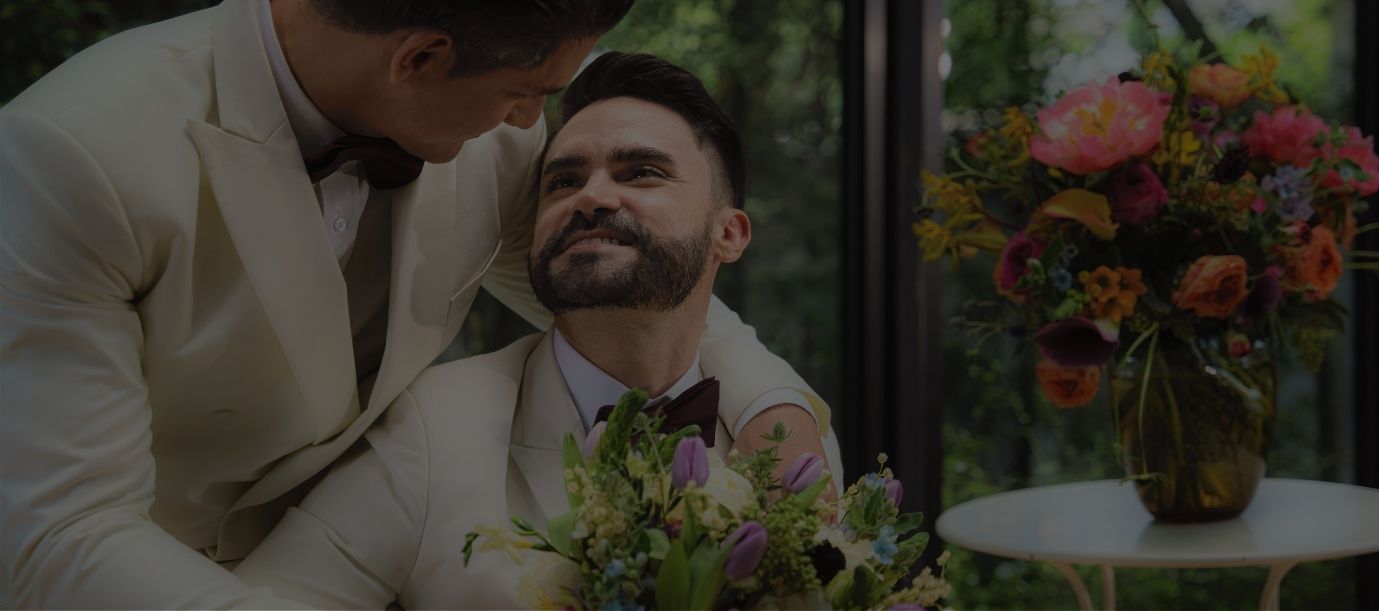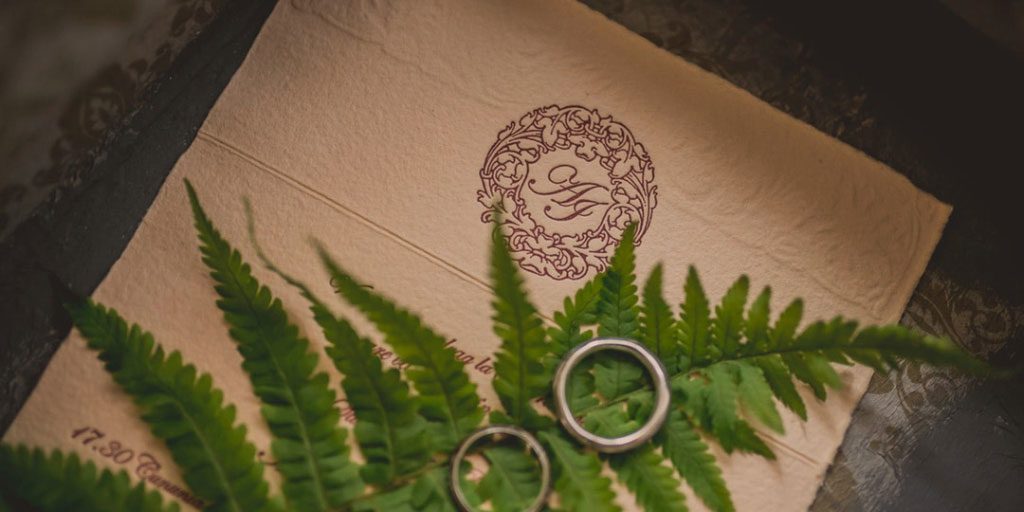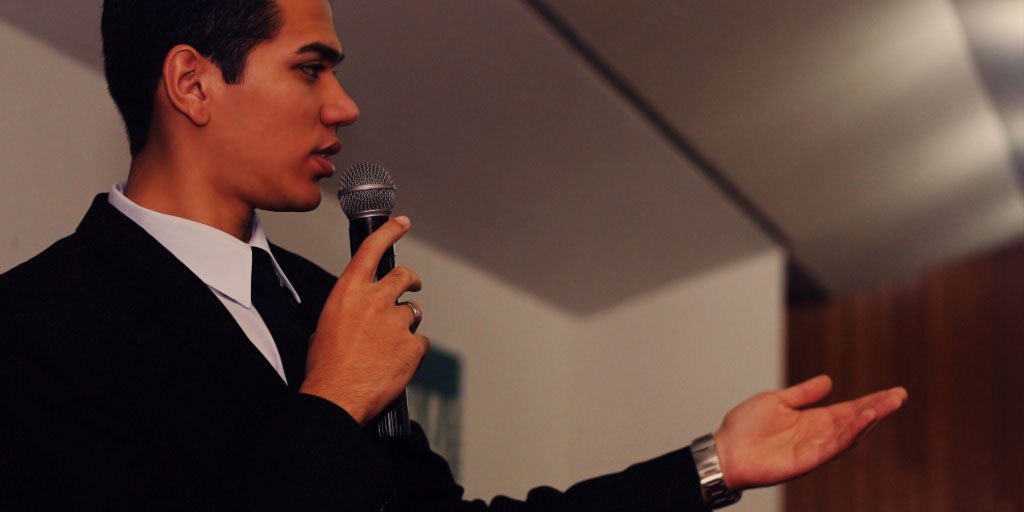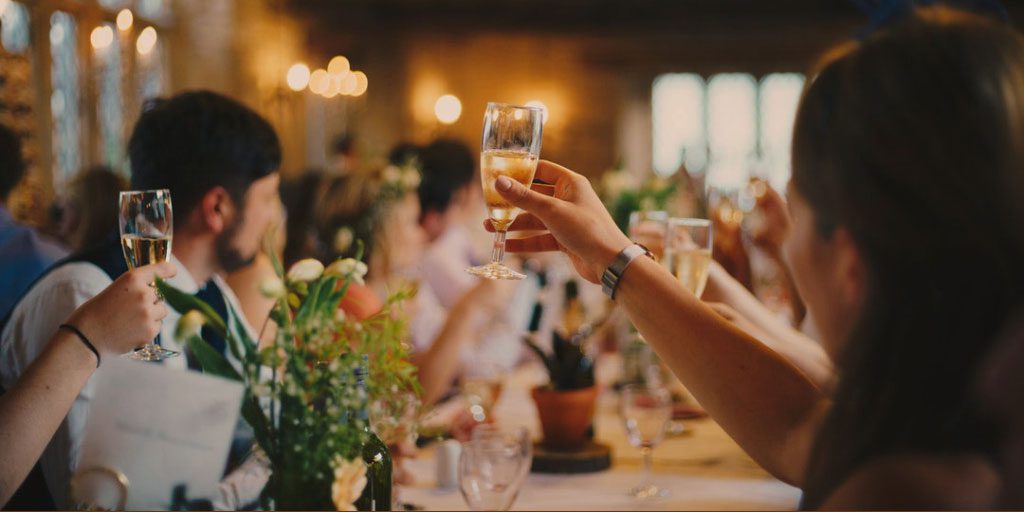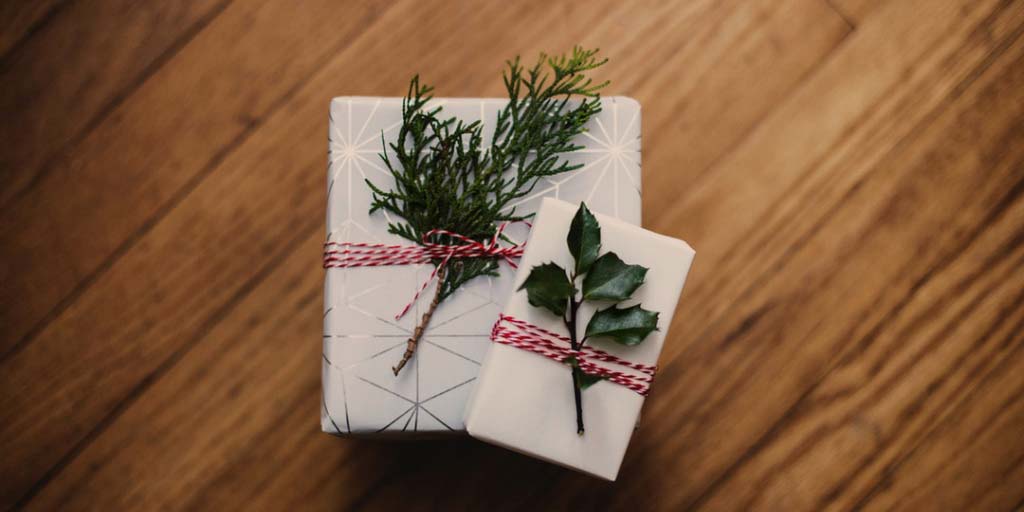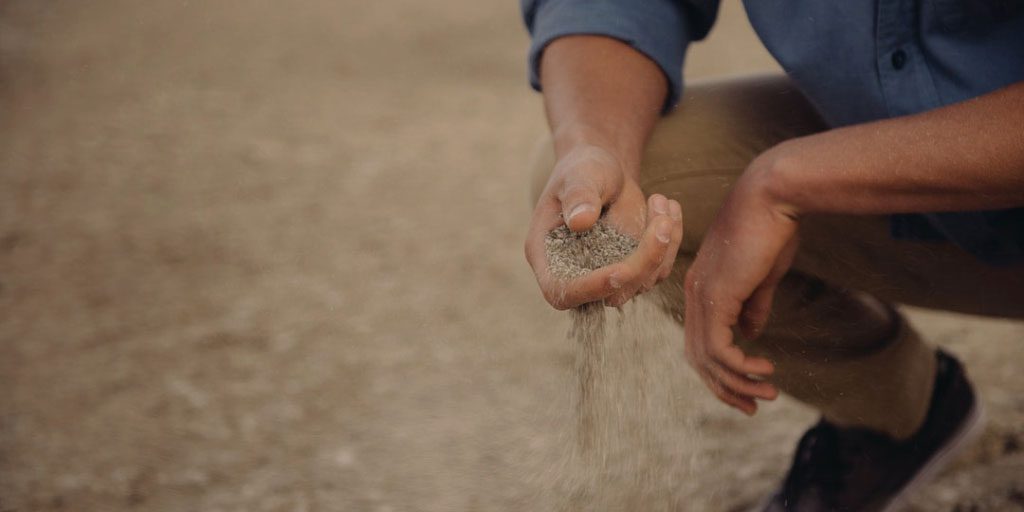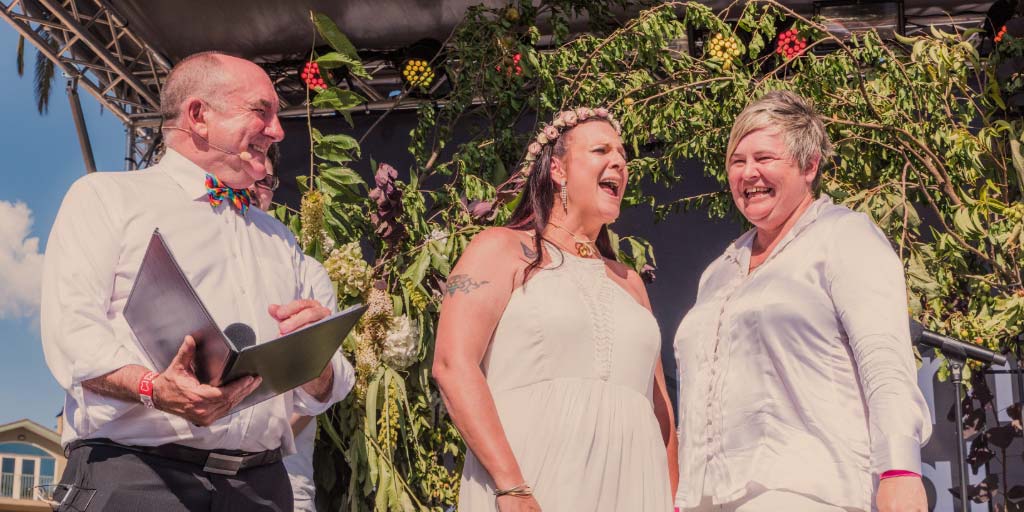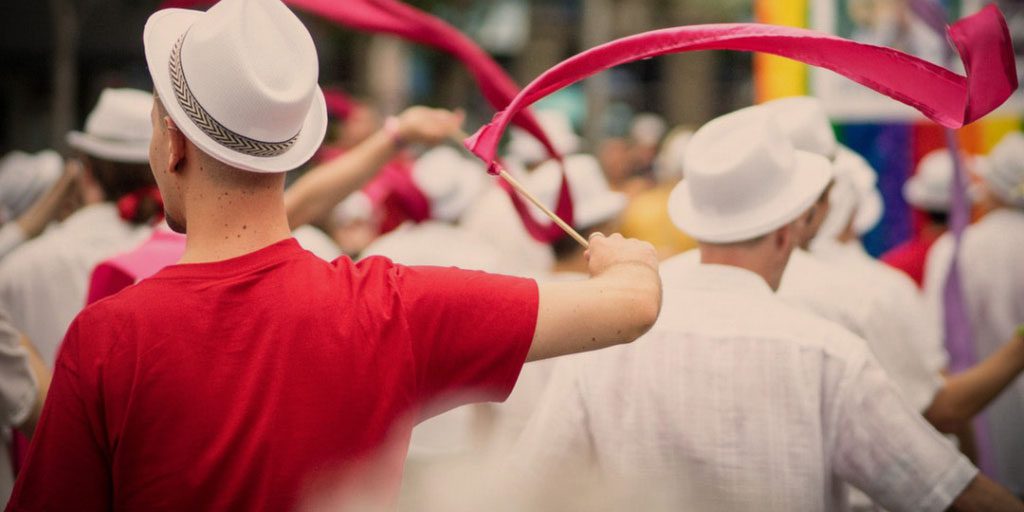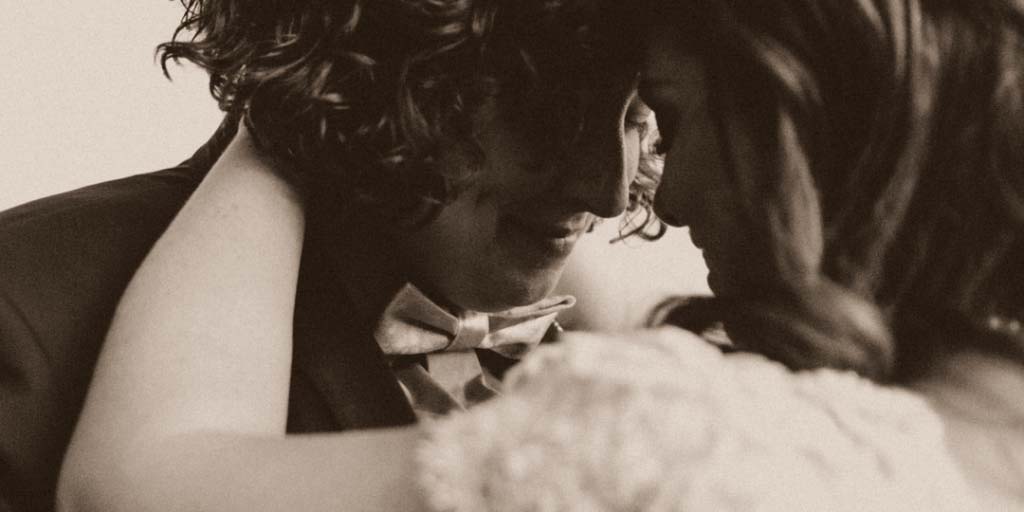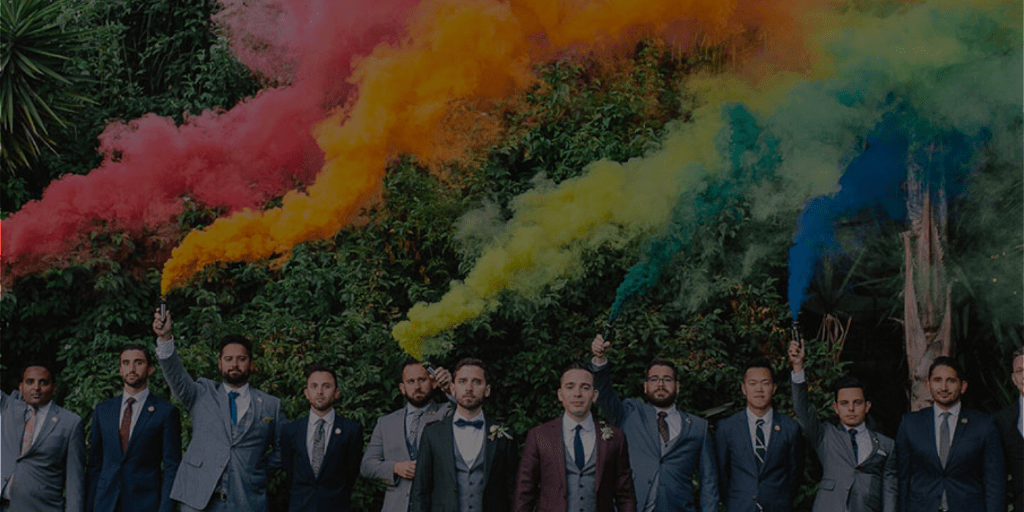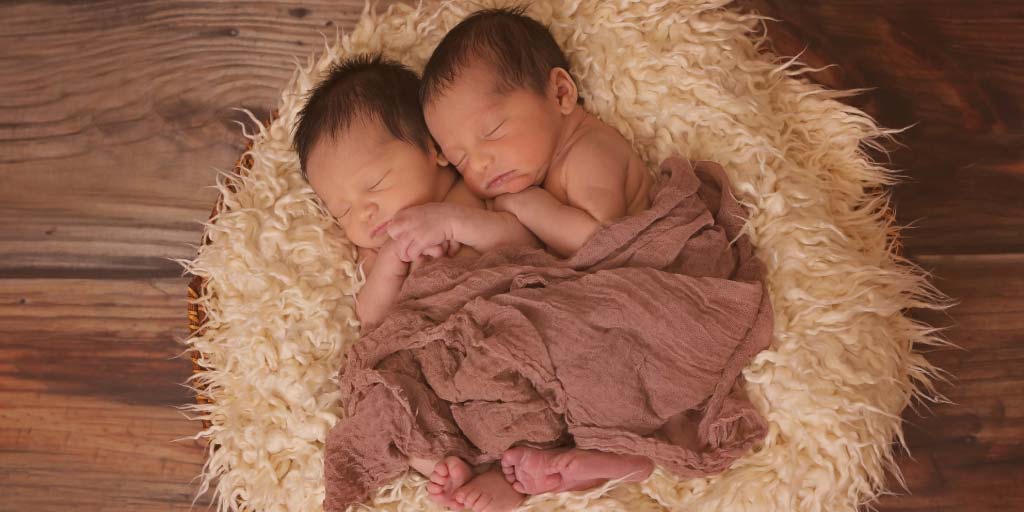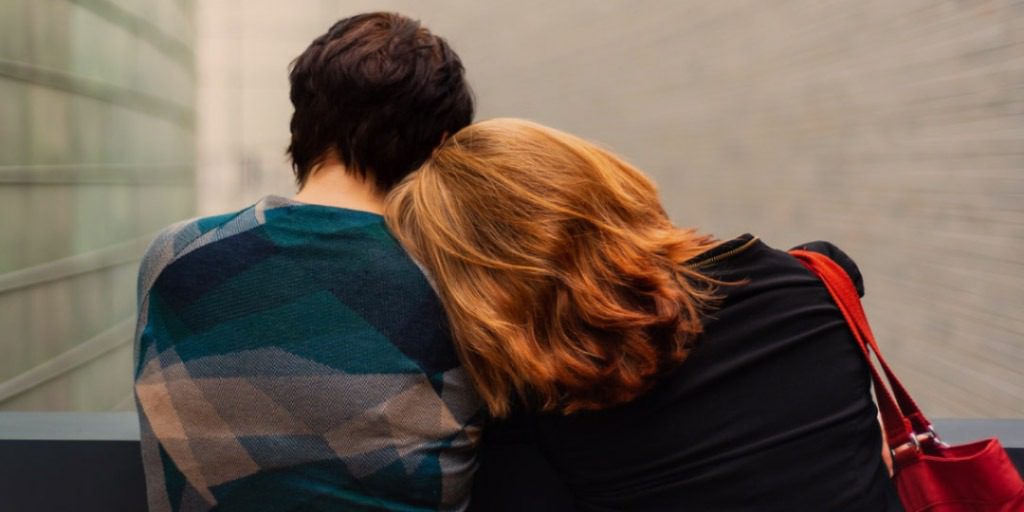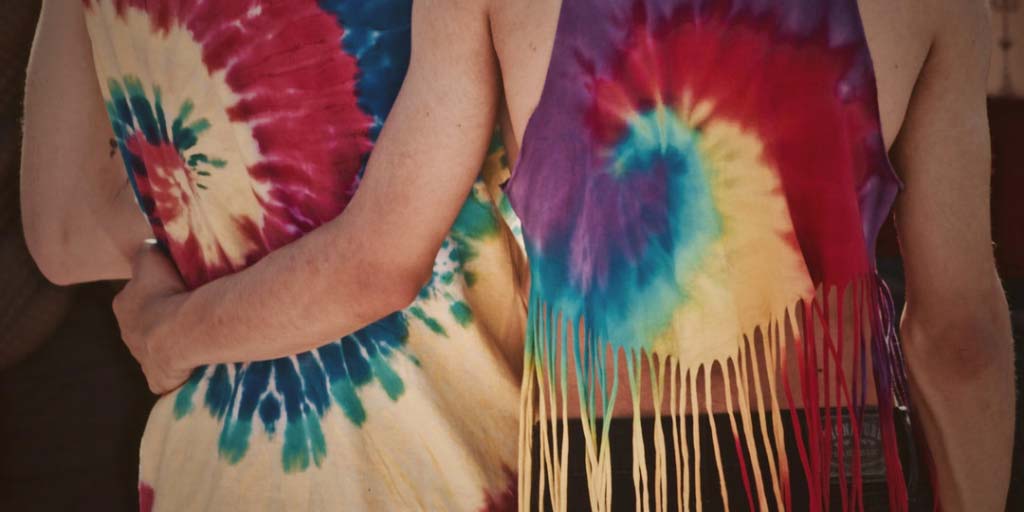
As a gay marriage celebrant located in Melbourne, Australia, I’ve now conducted more than 200 LGBTIQA+ marriages, arguably more than any other celebrant in Australia.
In the time since marriage equality became law on 9 December 2017, there have been some trends showing up in the queer couples I’ve married, compared with my straight couples. Here are twelve of those trends.
LGBTIQA+ couples who got married were slightly older than their straight counterparts (Figure 1)
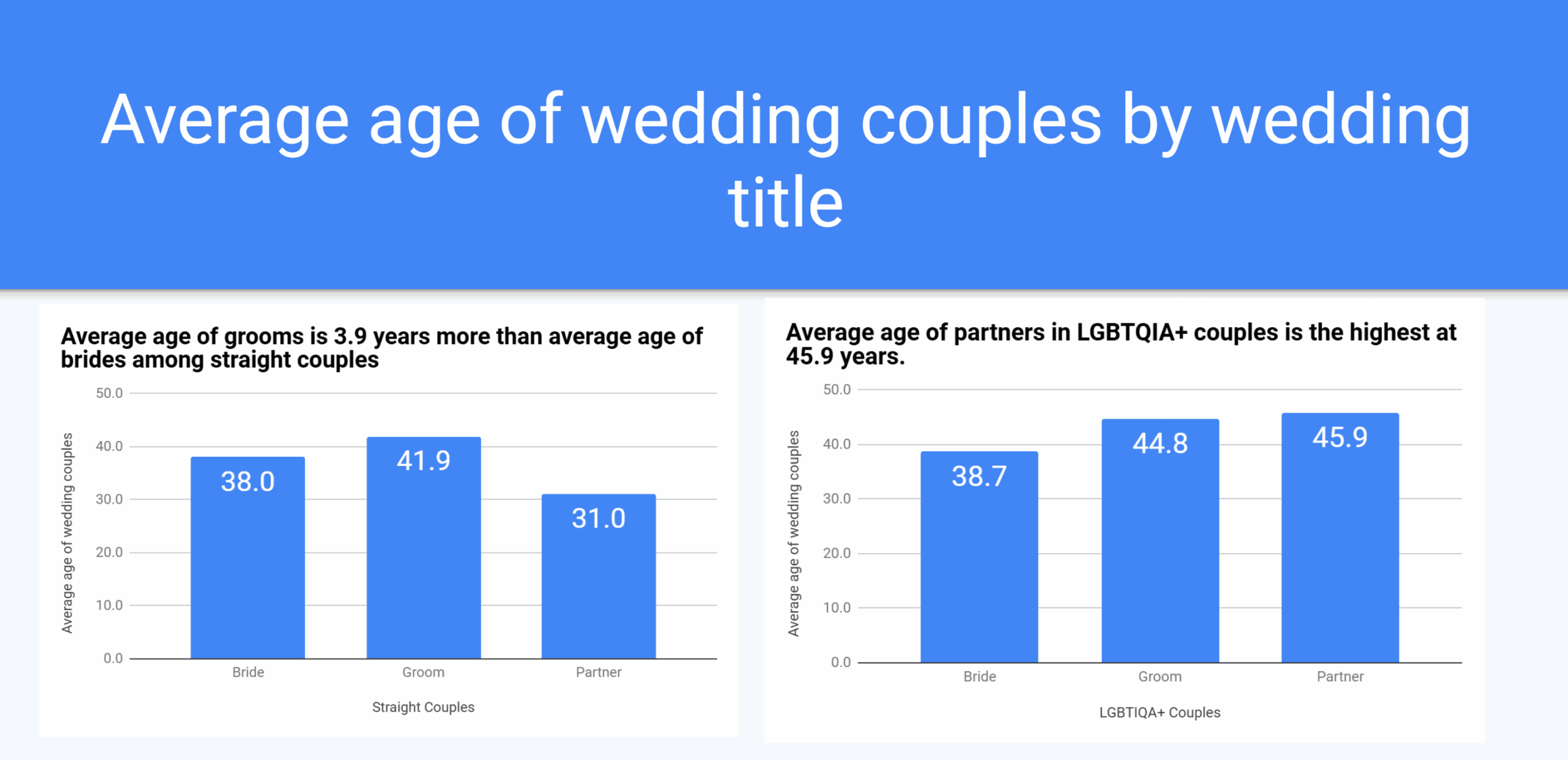
The average age of ‘brides’ who got married to an LGBTIQA partner was 38.7 years compared with 38.0 years for ‘brides’ in straight marriages; the average age of ‘grooms’ who got married to an LGBTIQA+ partner was 44.8 years compared with 41.9 years for ‘grooms’ in straight marriages.
In straight marriages, grooms were, on average, 3.9 years older than their brides. In LGBTIQA+ marriages, grooms were, on average, 6.1 years older than their brides. In LGBTIQA+ marriages, the average age of those who used the marriage term ‘partners’ was, on average 41.9 years.
In general, the LGBTIQA+ couples who got married were older than their straight counterparts. That’s hardly surprising. LGBTIQA+ couples have had to wait until 9 December 2017 to be given the legal right to get married. The year 2018 was the first calendar year in which LGBTIQA+ couples could get married in Australia. And in that first tranche of marriages, there were lots of older couples who’d been waiting and waiting for years and decades to get married, having been living together for many years. That trend has remained the same over time.
Interested to contribute to my blog?
The age gap between parties in LGBTIQA+ couples is higher and more evenly distributed than between parties in straight couples (Figure 2)
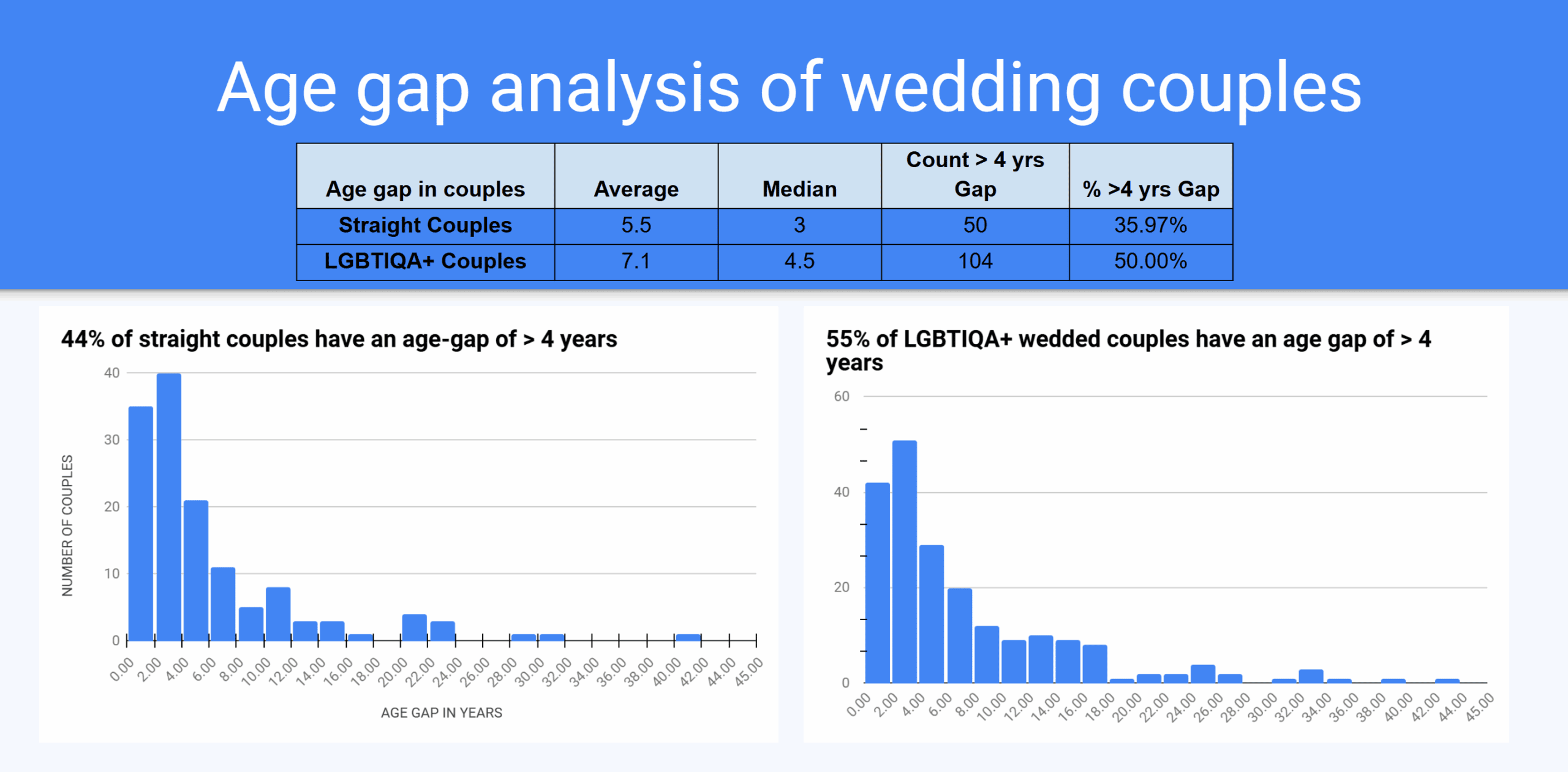
Observation: The age gap amongst LGBTIQA+ couples is higher and more evenly distributed, compared with straight couples.
There is a larger age gap between LGBTIQA+ parties than straight parties (an average of 7.1 years compared with 5.5 years). 50% of LGBTIQA+ couples have an age gap of more than 4 years, compared with just over one-third of straight couples. This is difficult to explain in scientific terms, as there’s been little research devoted to it. But there’s a phenomenon in gay culture of some couples being attracted despite a significant age gap.
And, although there are some heteronormative-based stereotypes (‘sugar daddy’ or ‘gold digger’) that have been applied to the gay community to try to explain it, members of such relationships maintain that it’s genuine physical, emotional and sexual attraction rather than financial motive etc.
Of course, the main factor that explains this age difference is of the size of the ‘gene pool’. As humans, we search for a soul mate, someone with shared values, interests and perspectives in life. Notwithstanding the fact that some of us may have an inherent interest in finding someone older or younger than us, the fact is that, by the time members of the LGBTIQA+ community feel confident and safe enough to search for such a soul mate, many in their age group have been taken.
It’s much easier to find a soul mate who is around the same age, if you’re straight. And so, without compromising on other qualities such as those outlined above, LGBTIQA+ people being to search wider and wider, age-wise, until they find ‘the one’.
The distribution of the ages of LGBTIQA+ couples is markedly wider (Figure 3)

Observation: LGBTIQA+ couples are more evenly spread across the different age groups, compared with straight couples.
The distribution of the ages of LGBTIQA+ couples is markedly more diverse (spread quite evenly across a range of ages from 20 to 70+) than the ages of straight couples whose ages are more clustered in their early-30s and mid-40s. There are small proportions of LGBTIQA+ couples in their 20s and in their 60s and above who got married – with the majority peaking in late 20s and early 30s for women, and roughly the same proportion getting married in their late 30s through to their late 50s.
This could reflect the fact that, still, in our society there are persistent pressures for straight people to get married by the time they are 30. That way, they can begin to form a family whilst still peaking in their careers and afford to bring children up in a manner that gives them a good start to life.
LGBTIQA+ couples, on the other hand, don’t seem to be subject to the same sorts of stereotypical pressures – i.e. of getting married, establishing a home, forming a family, building a career etc. It must be said, though, that whilst this comment applies to those LGBTIQA+ people who are out and proud, there are often other, large pressures on LGBTIQA+ people in their 20s and 30s who are not out and who may still live with their parents, or alone, and not have a steady partner or may not have a predisposition to having children and forming a family.
87% of my LGBTIQA+ clients had never been married before (Figure 4)
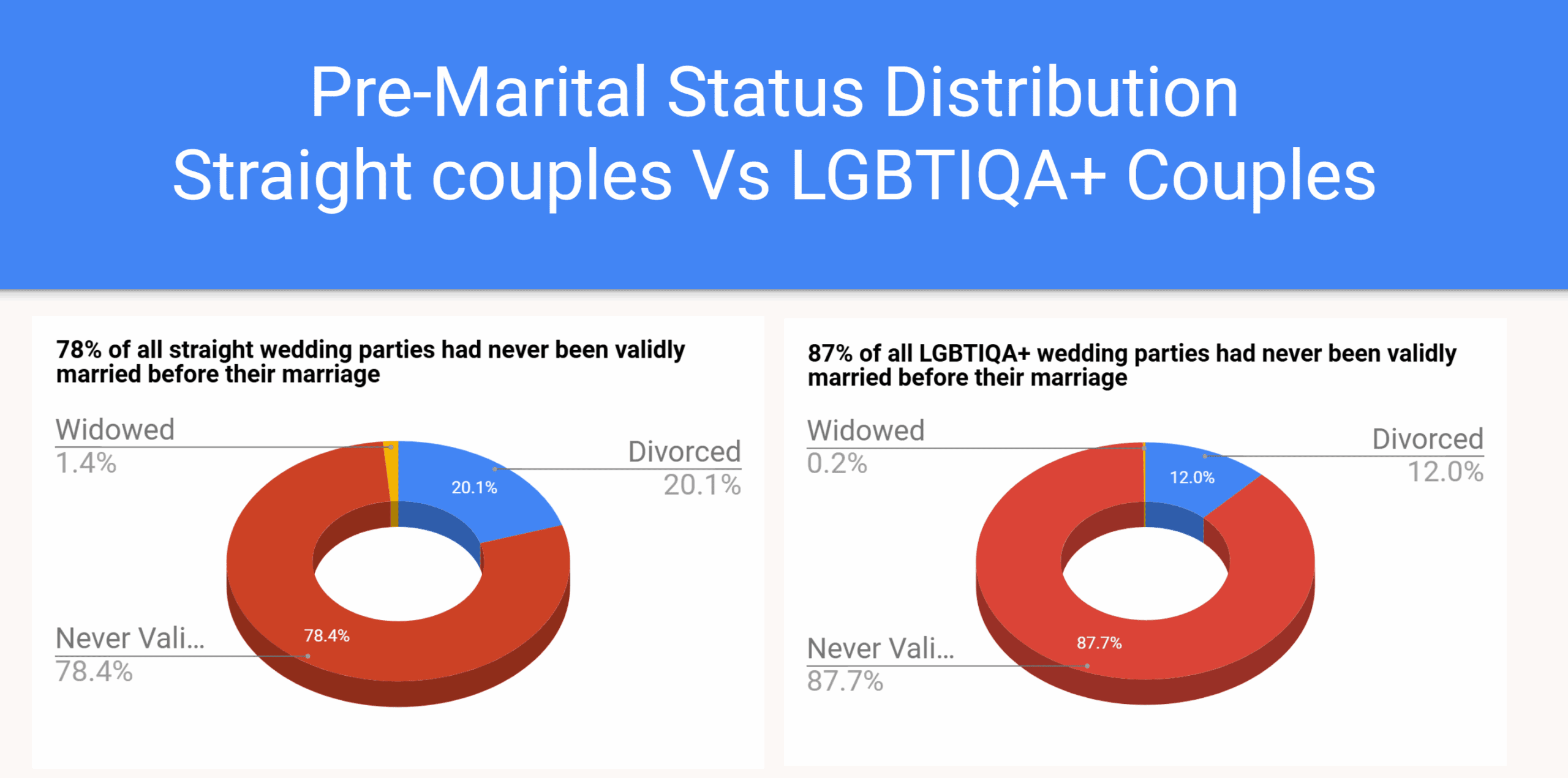
Unsurprisingly, 87.7% of my LGBTIQA+ clients had never been married – mainly because, until 2017, they were prohibited by law from being married to someone other than a ‘person of the opposite sex’. But it also means that they resisted the overwhelming societal expectation that they’d ‘meet the right boy or girl’ and get married.
But 12% (1 in 8) had been married – to people of the ‘opposite sex’. Lots of these people grew up in times when it was expected that, as part of growing up and reaching various milestones and rites of passage, you’d meet the ‘right one’, marry them, settle down in a three-bedroom house with a white picket fence and begin to form a family. Just like the rest of society. And so about 1 in 8 of my LGBTIQA+ clients did just that. And, when they eventually came out, they got divorced – or perhaps that happened in the reverse order! Interestingly, a very small proportion of my LGBTIQA+ clients had been widowed. Often, in these circumstances, they waited for the death of their former spouse before they came out. Eventually, they met their LGBTIQA+ soul mate and got married.
By comparison, approximately 1 in 5 straight clients of mine had previously been married and divorced, compared with 1 in 8 of my LGBTIQA+ clients. Divorced straight clients were more evenly distributed in terms of their age than their straight peers who had never been married – there was a cluster between late 20s to 40s for people who had never been married.
Whilst the numbers of LGBTIQA+ clients who had been divorced were fewer than for straight couples, the age range for divorced LGBTIQA+ clients was between the early 40s to mid 60s. Those LGBTIQA+ clients who had never been married were younger, mainly distributed between the ages of mid 20s and 60 years.
Male Vs Female Wedding Celebrant. Who is better?
LGBTIQA+ couples are just as likely as straight couples to have lived together before marriage (Figure 5)
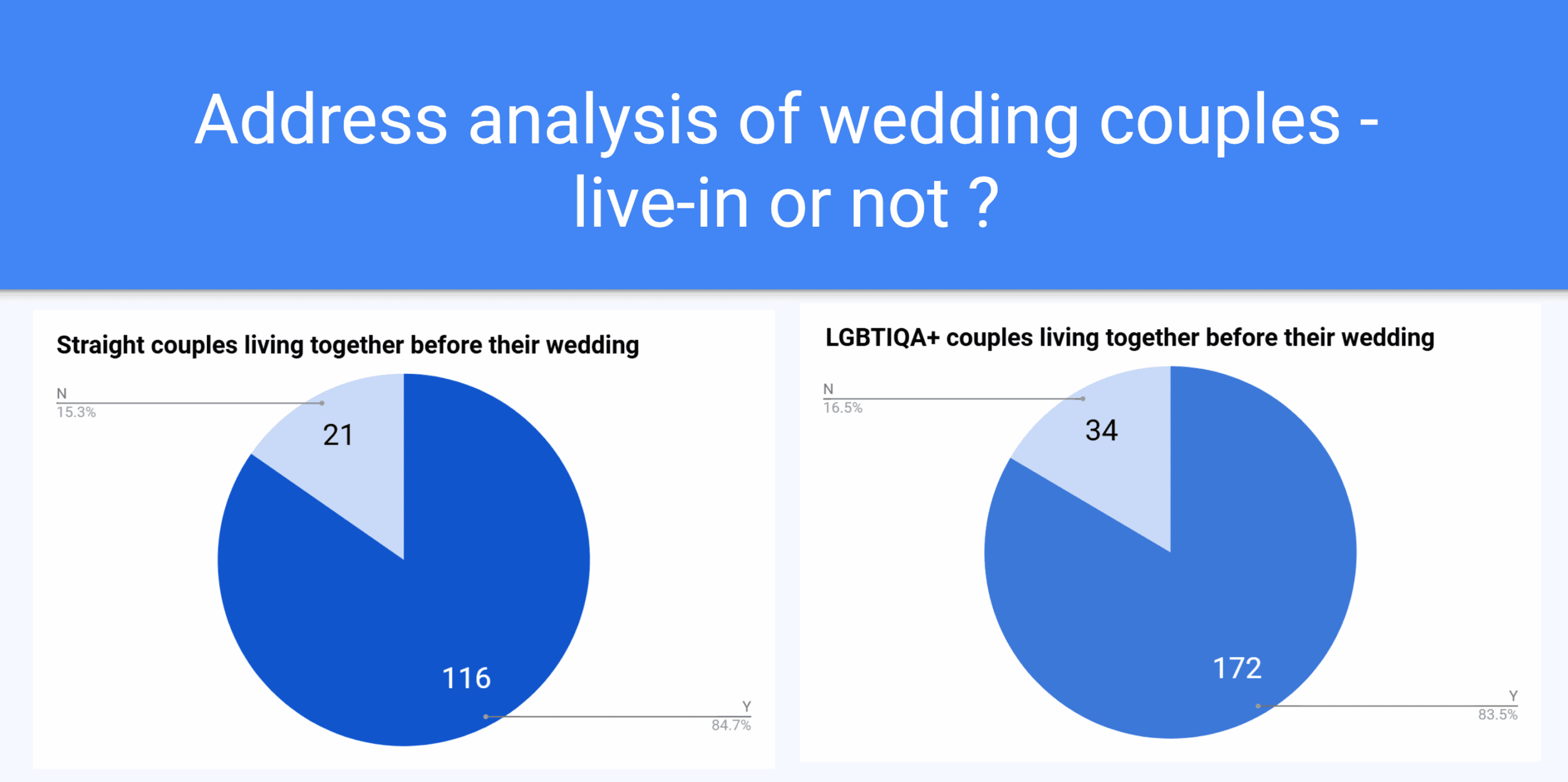
LGBTIQA+ couples are just as likely as straight couples to have lived together before marriage – 84%.
For many Australian LGBTIQA+ couples, this has been the case for years or decades. In times when the outside world was hostile, when harassment in public was rife, when they were denied promotion opportunities at work, when they couldn’t be out and proud while playing sport or at work or at their place of worship, LGBTIQA+ couples’ homes became their safe haven. These couples lived together as ‘friends’ or ‘room mates’.
In some ways, it’s significant that this percentage is so high, given that many of my LGBTIQA+ couples come from countries outside Australia where it is a criminal offence to be LGBTIQA+. Some will live together as ‘friends’ or ‘room mates’ – knowing themselves that they are committed to each other but to the outside world they are just two people living together.
And so, when they fell in love with their LGBTIQA+ partner, despite being denied the legal right to marry that every other section of society had, LGBTIQA+ couples closed in. They bunkered down and made their home their castle. That castle became their safe space. That occurred in years gone by in Australia – and it continues to occur today in countries where there is no marriage equality.
LGBTIQA+ couples like their weddings in the hotter months (Figure 6)

Observation: LGBTIQA+ couples are slightly more likely to plan their wedding early in the year compared with straight couples. March is the favourite month for both LGBTIQA+ and straight weddings.
With regard to my couples, more LGBTIQA+ couples hold their wedding in the earlier, hotter months of the year (January to April) than straight couples – and are also more prepared to have their wedding in the cooler months of May and June. LGBTIQA+ couples seem far less hung up on the perfect photos that many straight couples seem to yearn for. And so, their weddings are not so weather-dependent – the month or amount of light or time of day or shadows don’t feature as much in their wedding planning.
The take-up of my big gay wedding packages is on the rise for same sex couples while, for straight couples, the trend is towards legals-only weddings. Perhaps this is a trend related to the legacy of COVID?
– Bronte Price
Most LGBTIQA+ couples opt for a Short and Sweet (legals-only) ceremony package – the opposite of straight couples (Figure 7)
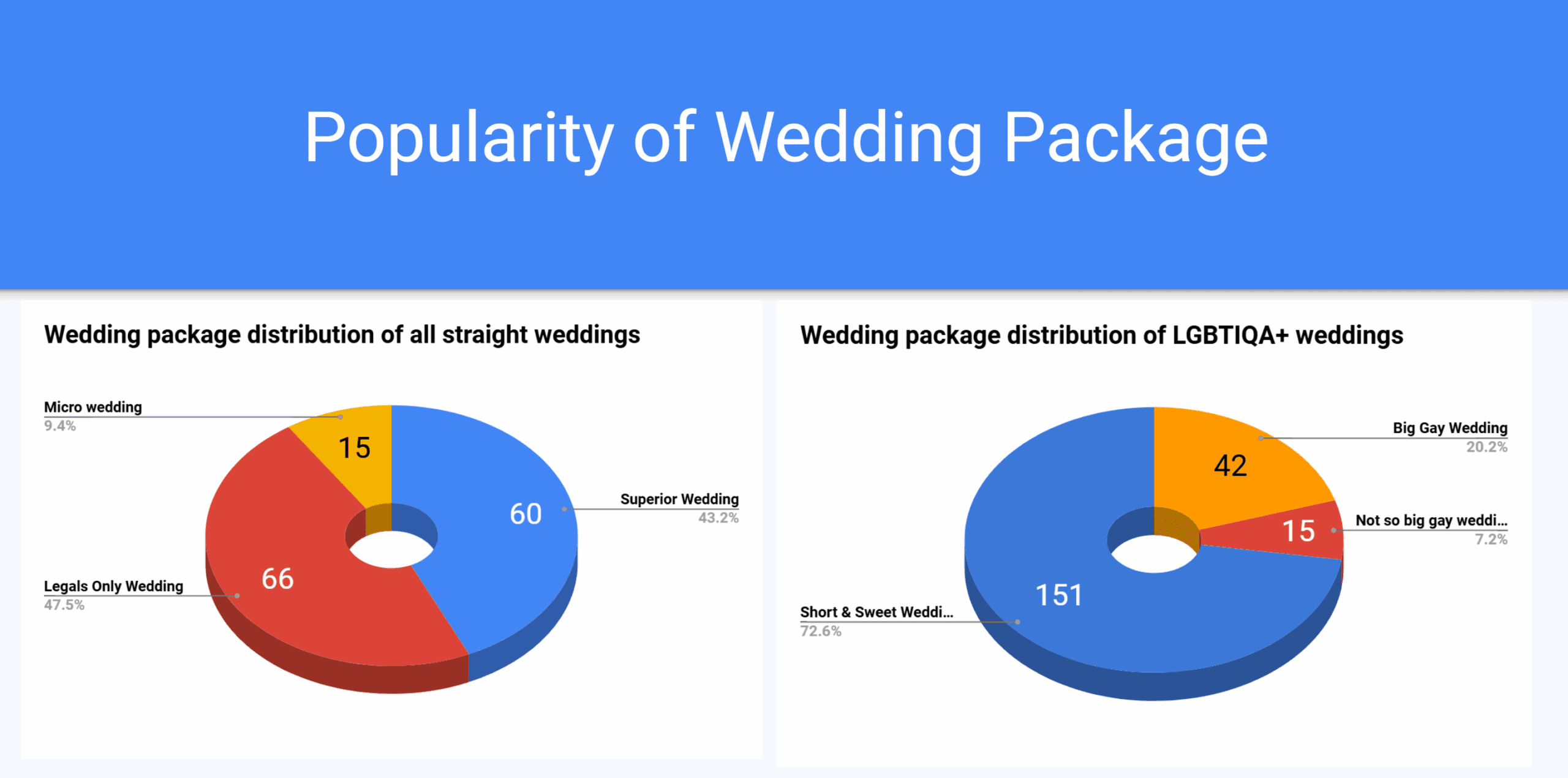
Almost half of my straight couples opt for my Superior Wedding Experience ceremony, the ‘bells and whistles’ option. For them, it’s important to have the traditional parts of a ceremony included. That’s understandable – it’s what many people have been ’educated’ about, in an informal sense, regarding what constitutes a marriage ceremony. This particular package offers just that.
At the same time, more than half of my straight couples are opting for the legals-only wedding ceremony. Perhaps they’ve been married before and don’t want all the fuss that goes with a large and complex wedding. Or perhaps they want to put the money they’d spend on a wedding into their mortgage or an overseas holiday. Or spend it on their children’s private school education.
On the other hand, lots of Australian LGBTIQA+ couples spent their money on a big commitment ceremony when they were legally prohibited from getting married, and so now all they want is to make their union legal, followed by a small celebration with a handful of close friends.
For those LGBTIQA+ couples from outside Australia, it doesn’t make logistical or financial sense to have a large, complex wedding with many guests. They are looking for a ceremony that contains only the legal aspects of getting married – and will often have a ‘wedding reception’ or celebration with their loved ones when they get back home after getting married here. However, some LGBTIQA+ couples from outside Australia have brought with them perhaps 20 close friends from their home country to help them celebrate on their special day.
That’s why more than 70% of LGBTIQA+ couples opt for a Short and Sweet ceremony, with a handful of close friends in attendance. Often, if the couples are from outside Australia, they’ll travel to Melbourne by themselves, get married in my front garden and I will supply the two legal witnesses. Short and Sweet it is!
LGBTIQA+ couples are coming from foreign countries to get married (Figure 8)
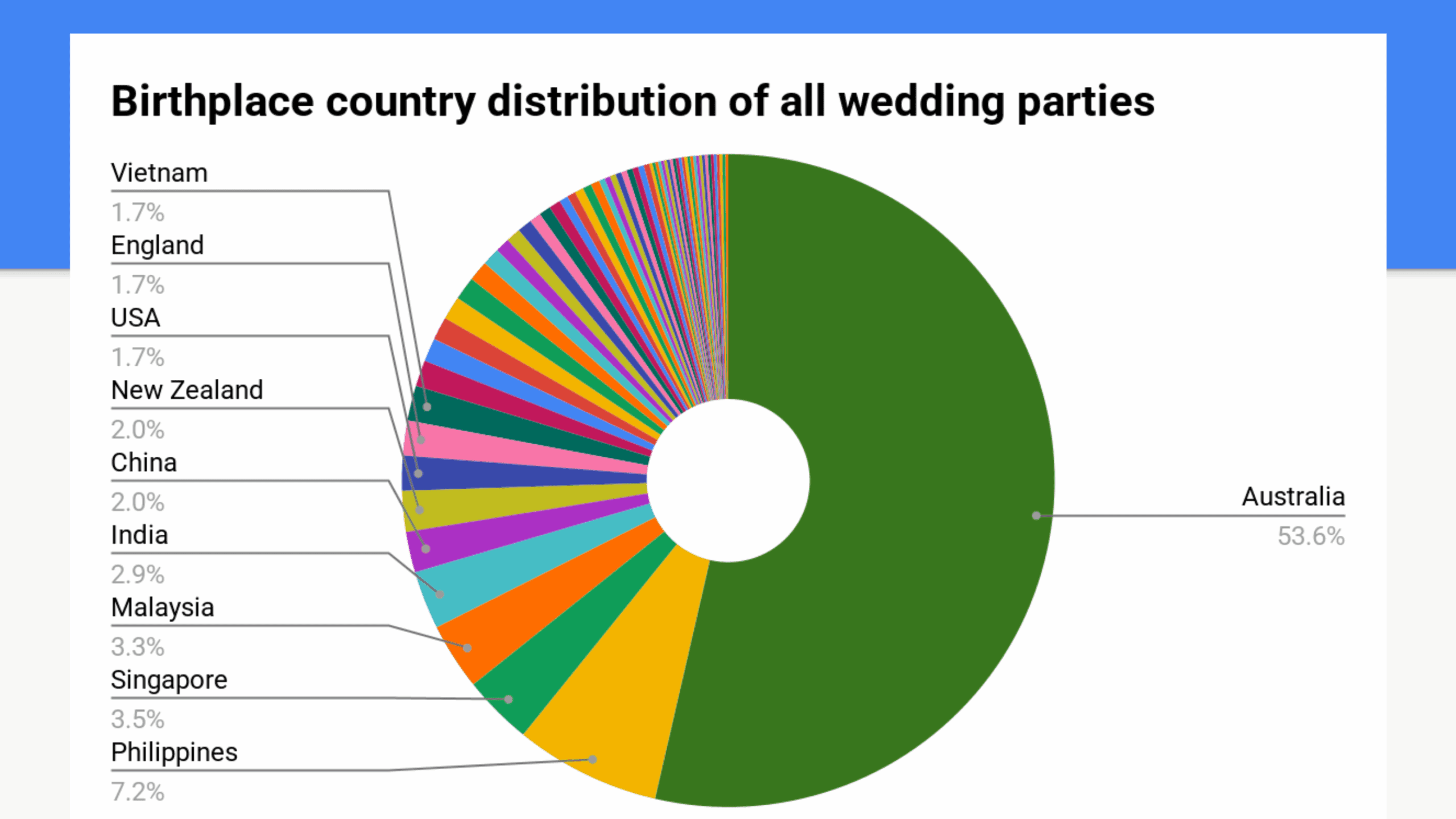
Just over half of my wedding couples – straight and LGBTIQA+ – were born in Australia. But many were born outside Australia.
A higher proportion of LGBTIQA+ couples than straight couples from overseas are increasingly coming to Australia to get married, often combining their trip with a holiday down-under. Whilst the vast majority of my straight couples were from within Australia, and the majority of LGBTIQA+ couples I married also came from Australia, many couples came from foreign countries to get married by me. Many of these couples are deeply closeted. You can read about why they choose to get married, here.
There is greater diversity in the country of birth for LGBTIQA+ couples than for straight couples (Figure 9)
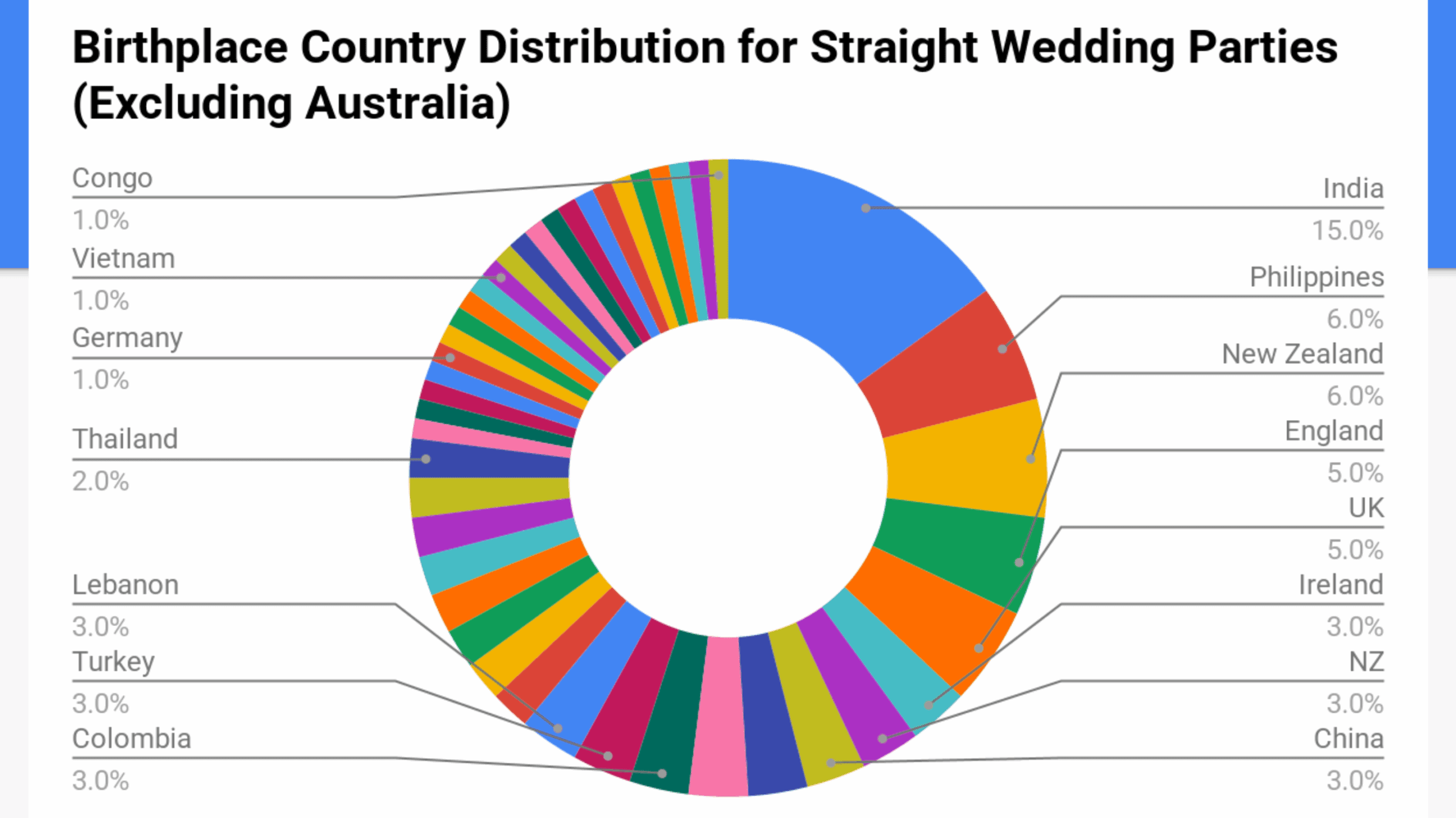
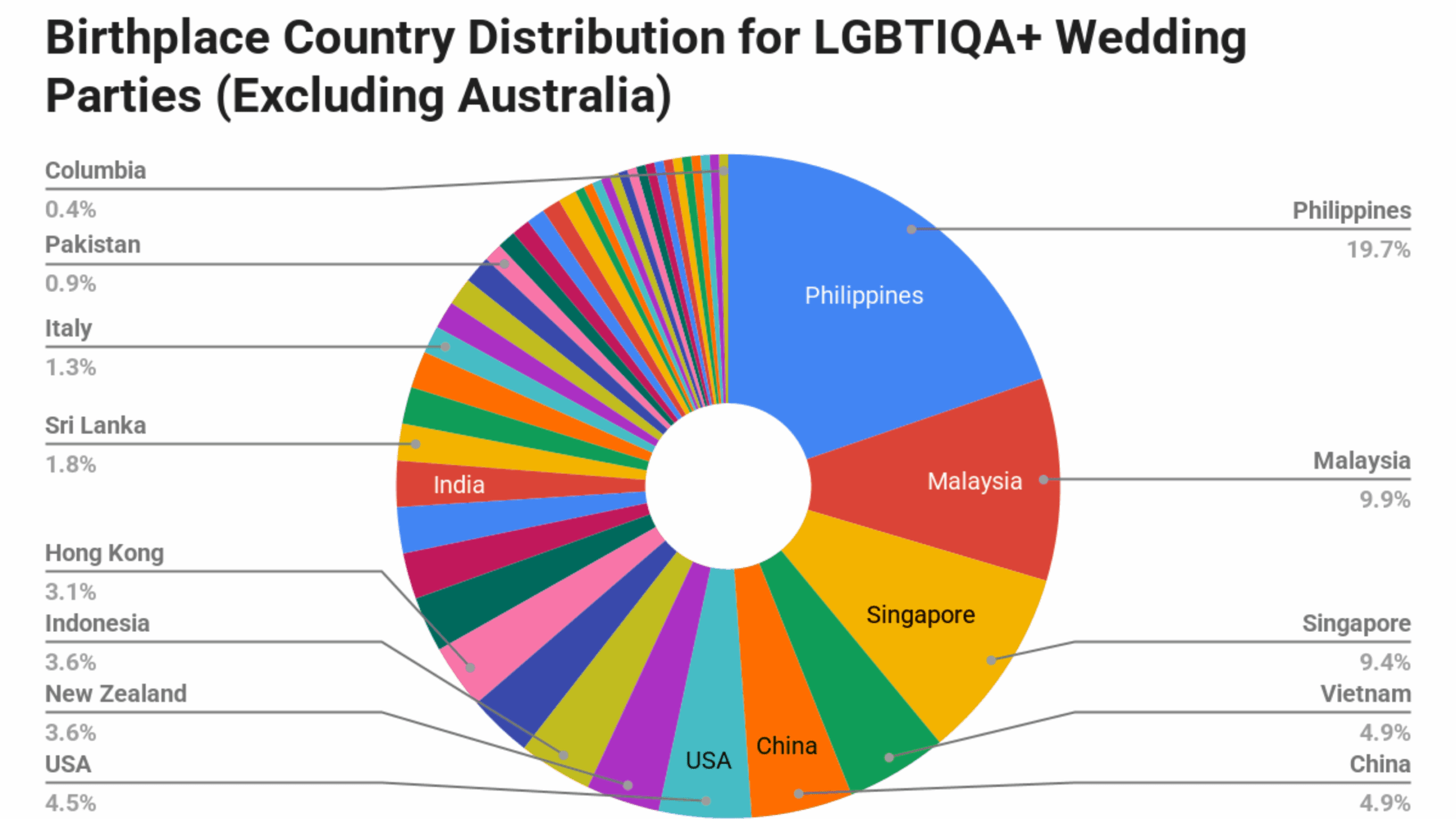
By far the majority of my straight couples were born in Australia, with some coming from India, the UK and New Zealand. Often these couples will have relatives living here and decide to combine a trip down-under or across the pond with an opportunity to get married in front of their relatives. Others migrated here from their country of birth and have been living here.
Many of my LGBTIQA+ couples have come from countries where homosexuality is a criminal offence, and several came from countries where to be homosexual is punishable by death. Even to search for ‘gay celebrant melbourne’ or similar is a risk for them – internet accounts are closely monitored for the use of such key words – and such searches could be life-threatening. That is why I place such importance on ensuring that my LGBTIQA+ couples, no matter where they come from – are safe and that their privacy is maintained at all costs.
But the fact that these couples are determined to marry the person they love and who happens to be LGBTIQA+ goes to the importance of the institution of marriage in people’s lives and the significance of being able to be married, at least in their minds, when they return to their homeland. It gives them hope, as Harvey Milk said on more than one occasion. Some of these couples will use their Australian marriage certificate to help them migrate to a country where there is marriage equality and where they can live authentic lives, together.
The risks for these couples are discussed in some detail in this e-book: Australia as a destination for your wedding.
Find out how to plan your wedding under $1000
The wedding term most commonly used by LGBTIQA+ couples is ‘partner’ (Figure 10)
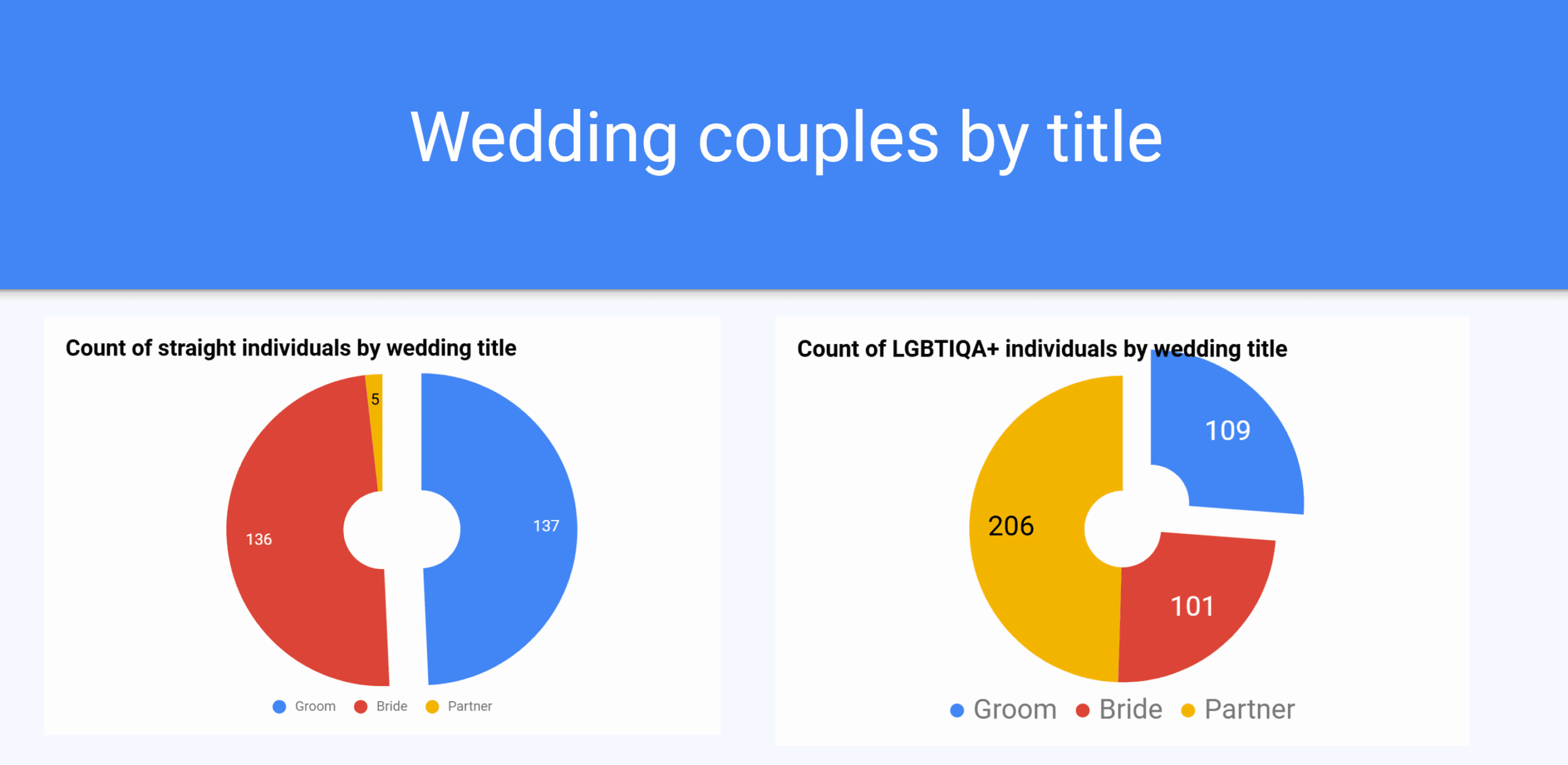
Observation: “Partner” is the main wedding title of Bronte’s LGBTIQA+ weddings, while “Bride” & “Groom” are equally used in straight weddings.
The wedding term most commonly used by LGBTIQA+ couples (almost 50%) is ‘partner’, with approximately ¼ choosing to use ‘bride’ and ¼ choosing to use ‘groom’. Some female parties I’ve married have chosen the marriage term ‘groom’ whilst some male parties I’ve married have chosen the marriage term ‘bride’.
This is very different from straight couples – almost all of whom used ‘bride’ and ‘groom’ exclusively. Very few straight couples I’ve married have chosen to use the marriage term ‘partner’.
Many LGBTIQA+ couples view the marriage terms ‘bride’ and ‘groom’ as heteronormative and irrelevant to them. They don’t relate to those terms. And they dislike the terms ‘partner’ and ‘spouse’. Often, they will ask if they really do have to choose one of the marriage terms – and, of course, they do. Some men will choose ‘bride’ and some women will choose ‘groom’ not only because of how they identify but also as a silent protest against being forced to use these outdated, straight terms.
Now that the Marriage Act 1961 has been amended to define ‘marriage’ as being ‘between two people’, it seems anachronistic to continue to require that parties to a marriage choose one of these marriage terms so deeply rooted in the heteronormative past or the institution of marriage. And yet the Australian Bureau of Statistics and the Australian Attorney General’s Department continues to require them to choose one of these terms to be entered on the Notice of Intended Marriage.
Most LGBTIQA+ couples are drawn to non-traditional wedding venues (Figure 11)
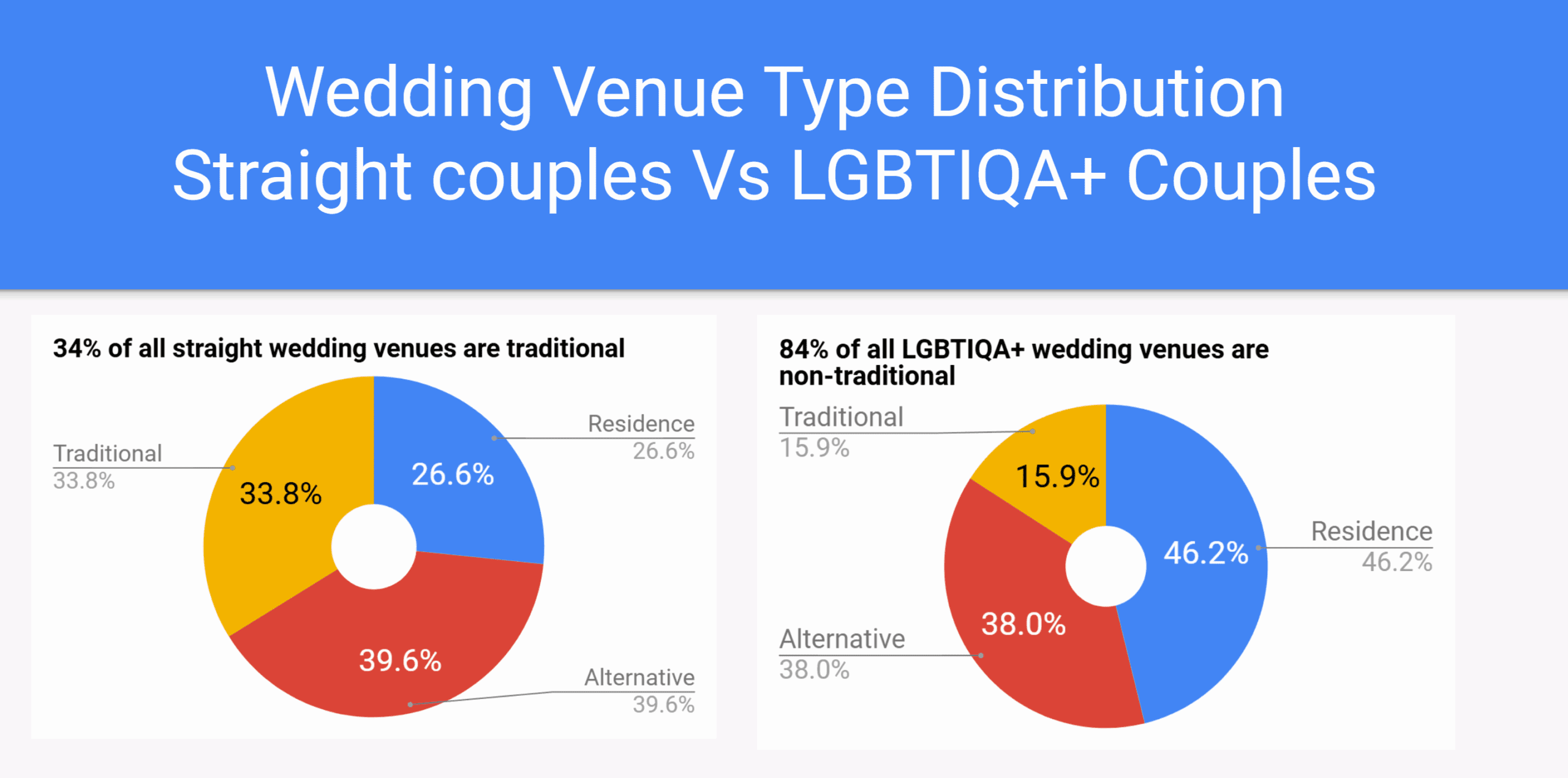
Observation: Straight couples are more strongly tied to traditional wedding venues than LGBTIQA+ couples. LGBTIQA+ couples are more likely to be married at a residence or at alternative venues.
Traditionally, venues dedicated to weddings have driven much of the straight wedding market and wedding industry. Often, they’ll be called a ‘reception house’ or similar. They will typically have a small chapel-style place for the ceremony, a nice garden and nice internal rooms for photographs, and a large function room for the ‘wedding reception’. Many have been around since the 1970s. The function room will typically have round tables with a candle feature or flower feature in the centre, and each person will be assigned a place to sit. Often, as back in the 1970s, the menu will consist of an ‘alternate-drop’ of a chicken or beef-based meal. You get the picture!
Such venues were booked out months and years ahead and, indeed, were usually the first thing to be ticked off on a bride’s checklist when planning the wedding. Traditional wedding venues represented a viable civil marriage alternative location to a church which required a religious marriage ceremony.
Of my straight couples, just over 1/3 got married in a traditional wedding venue, with around 4 in 10 opting for an alternative venue, representing a contemporary shift away from the traditional venues to ones that better reflect them as a couple. A quarter of my straight couples opted to get married at home.
For LGBTIQA+ couples, the statistics are quite different: most are not drawn to traditional wedding venues – only about 1 in 6 of my LGBTIQA+ couples chose to get married there, about half of the proportion of straight couples who did so.
Over 1/3 of all LGBTIQA+ couples opted for alternative venues – art galleries, pubs, bars, restaurants, beaches, parks, public gardens and so on, similar to the proportion of straight couples.
And almost half my LGBTIQA+ couples got married at home – either their own home or that of a friend or my own home. It underlines the importance of LGBTIQA+ couples’ homes as being safe and comfortable, where they can invite a small group of their close friends and have an intimate wedding ceremony followed by some lovely food and beverages, privately.
LGBTIQA+ couples seem to be shunning the traditional wedding followed by a ‘reception’ with the same expensive package offered by the venues that has been offered to straight couples – ie essentially a straight wedding.
Number of couples who asked me to provide their two legal witnesses (Figure 12)
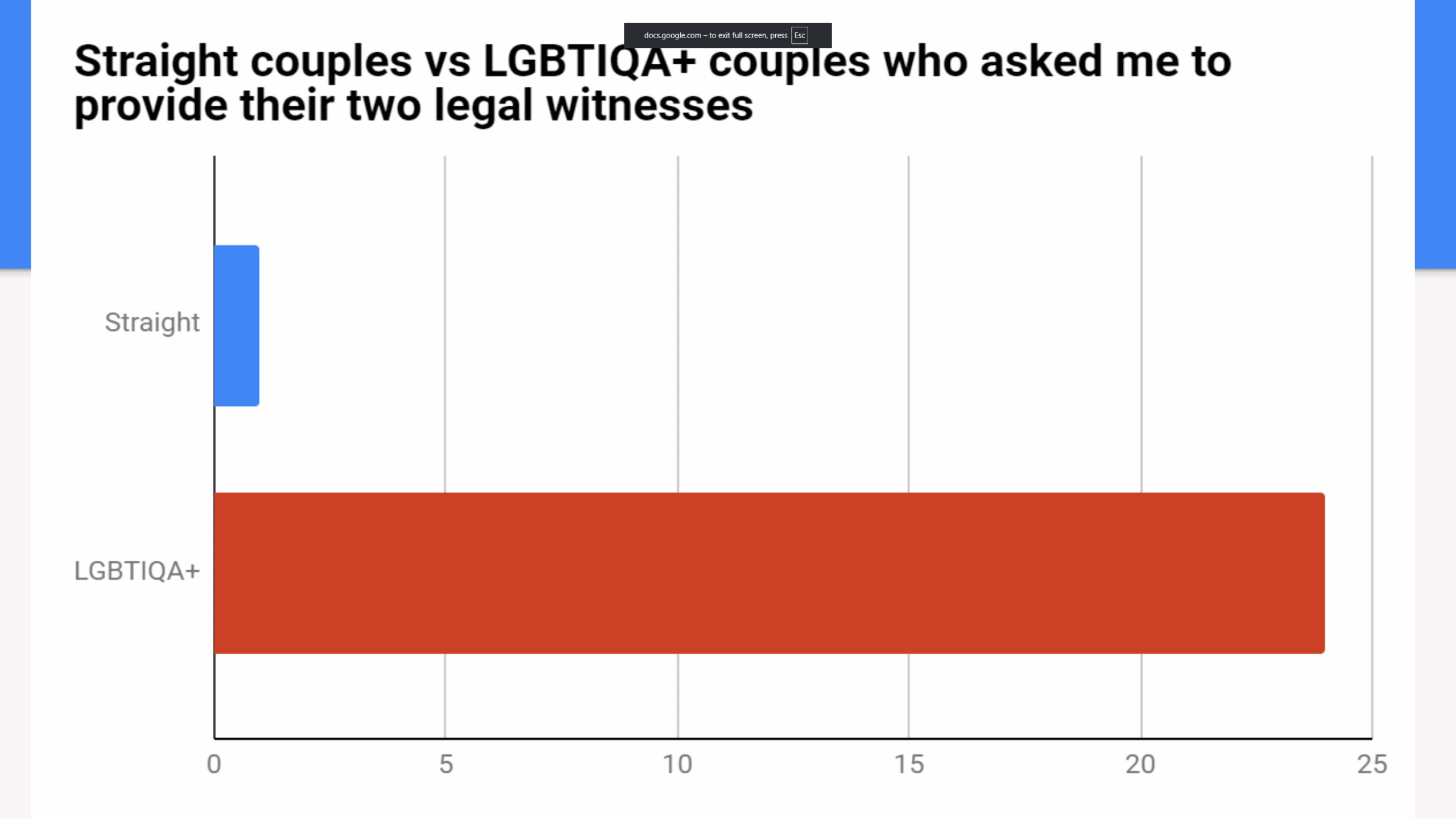
24 LGBTIQA+ couples have asked me to provide their legal witnesses, compared with one straight couple. Lots of my LGBTIQA+ couples come to Melbourne to get married in a Short and Sweet Marriage Ceremony, conducted in my front garden. Often, they travel here on a Visitor Visa as tourists and know no one who can be their legal witnesses. It’s easy for me to provide those witnesses – usually, it’s my husband (a gay man, obviously) and/or one or both of our next-door neighbours who are lesbians. It’s simple, private and safe. The straight couple for whom I provided the witnesses were from regional Victoria and wanted no one they knew to be involved in their legal marriage ceremony.
Error: No feed found.
Please go to the Instagram Feed settings page to create a feed.

